19 Artists versus COVID-19, un proyecto del diseñador gráfico español Álvaro López

19 Artists versus COVID-19 es un proyecto propuesto y organizado por el diseñador gráfico español, Álvaro López con sede en Londres, en colaboración con el fabricante de papel italiano Fedrigoni.
El proyecto trata de 19 artistas que han diseñado un póster cada uno para recaudar fondos para NHS Charities Together, una federación de 250 organizaciones benéficas que apoyan al Servicio Nacional de Salud, su personal, voluntarios y pacientes, en el Reino Unido.
El proyecto recoge a un colectivo internacional de artistas, incluyendo a Alan Kitching, Pablo Amargo, Noma Bar, Sarah Boris, Michael Curia, Nick Cook, Piero Di Biase, Mario Eskenazi, Vince Frost, Götz Gramlich, Michael Gibb, Henrik Kubel, Nina Jua Klein, Álvaro López, Rob Lowe, Morag Myerscough, Shweta Malhotra, Alejandro Paul y Matt Willey.
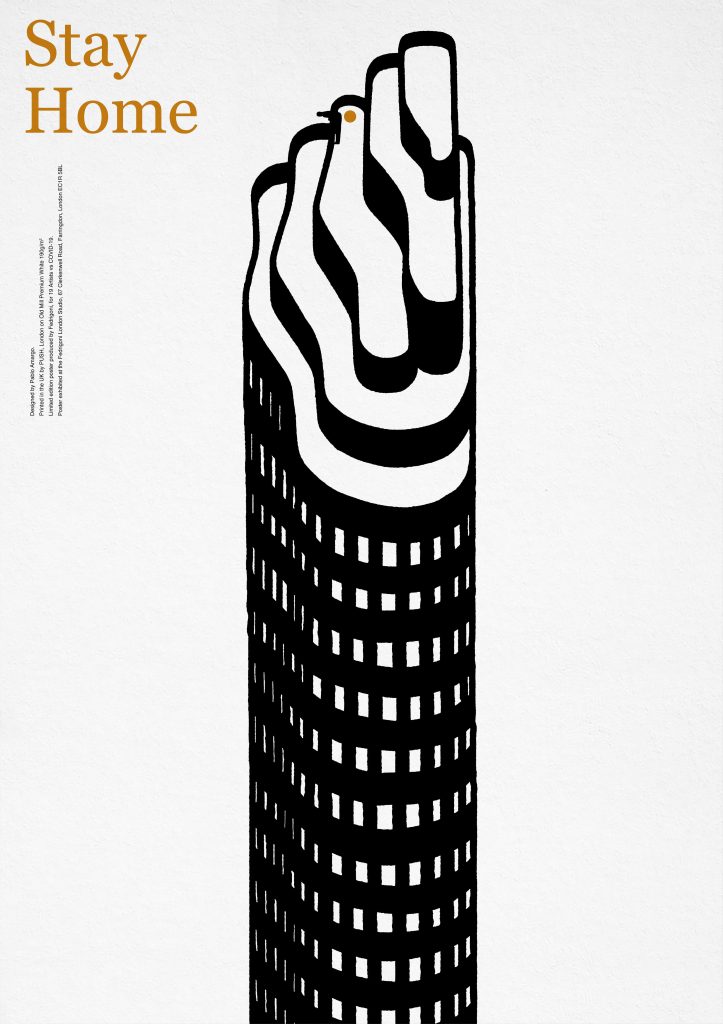
Se preguntó a cada artista que diseñara un póster formato A1 en torno al principal tema de actualidad que es la pandemia en la que nos encontramos envueltos. Cada uno lo interpretó de una manera muy diferente pero siempre en base al mensaje ‘Stay Home’. Este mensaje internacional ha sido muy importante en estos tiempos sin precedentes, y ha sido funda- mental para disminuir el número de afectados alrededor del mundo. Álvaro López, creador de la iniciativa y el brief dice: ‘Cada día veo en las noticias la valentía, coraje y entrega de los médicos y especialistas. Me encontaraba en casa con un ERTE y pensé que debía haber alguna manera en la que pudiera ayudar. Creo que el estar en casa, con tiempo para pensar, te hace ver las cosas desde una perspectiva muy diferente y puede llegar a ser un potente canal de inspiración. Los momentos difíciles siempre han sido una fuente de creatividad, es algo intrínseco de la naturaleza humana’
Los posters han sido producidos en litografía en la impresora del modelo Heidelberg Speedmaster por PUSH, imprenta con sede en Londres. Se ha dado la posibilidad a los artistas de usar un máximo de 4 colores pantone en una edición limitada de 75 copias por diseñador. Cada póster lleva aplicado un relieve ciego con el escudo de Fedrigoni y están numerados a mano. La elección del papel tenía que estar dentro de la gama de papeles de Fedrigoni Plus Collection.
Aunque el mensaje fuera único la manera de afrontarlo por cada diseñador fue muy diferente y enriquecedora. Algunos de ellos se dirigieron mas a la vía tipográfica como Alan Kitching, Morag Myerscough, Nick Cook, Piero Di Biase, Vince Frost, Alejandro Paul, Michael Gibb y Mario Eskenazi. También existió una corriente mas inclinada hacía la medicina y el proyecto al que se da apoyo, como Álvaro López, Götz Gramlich, Shweta Malhotra, y Noma Bar.

Y otros tendieron a una línea mas arquitectónica como Sarah Boris, Pablo Amargo, Michael Curia, Nina Jua Klein, Henrik Kubel, Matt Willey y Rob Lowe. Cada póster es único y juntos combinan una serie de emociones tan habitiuales estos días como son la soledad, el aislamiento, la frustación del distanciamiento, la falta de seguridad, pero a su vez muestran un apoyo y postivismo haciá lo que nos encontraremos en un futuro cada vez mas cercano.
Los pósters se están vendiendo en la página web www.19vs19.co.uk al precio de £19. La primera edición numerada de cada póster se subastará mas adelante. Una vez el aislamiento finalice y todo vuelva a la normalidad, los pósters se mostrarán en una exposición en la sede central de Fedrigoni en Londres.
Los 19 artistas quieren agradecer el esfuerzo a Fedrigoni UK, PUSH London, Premier Paper y UPS.
Web www.19vs19.co.uk
Instagram 19vs19 @19artistsversuscovid19
Instagram Álvaro López @alvarus85
Encuentro con Gerard Vidal, director de «Tahrib»
Rafael Cueto y Alberto M. Valverde, de cinemaattic.com, plataforma para la difusión del cortometraje en Escocia, charlan con Gerard Vidal sobre las influencias de «Tahrib» y repasan el contexto de producción del corto y su temática.
Encuentro organizado por el Instituto Cervantes de Londres en el marco de la Muestra en línea de cortometrajes iberoamericanos del Instituto Cervantes y huesca-filmfestival.com.
Hoja de sala de «Tahrib»: cvc.cervantes.es/artes/cine/hojas/tahrib.htm
Presentación de «Tahrib», a cargo de su director, Gerard Vidal:
«Spending so much of my life in Spain means I really appreciate the moment, just enjoying where I happen to be»
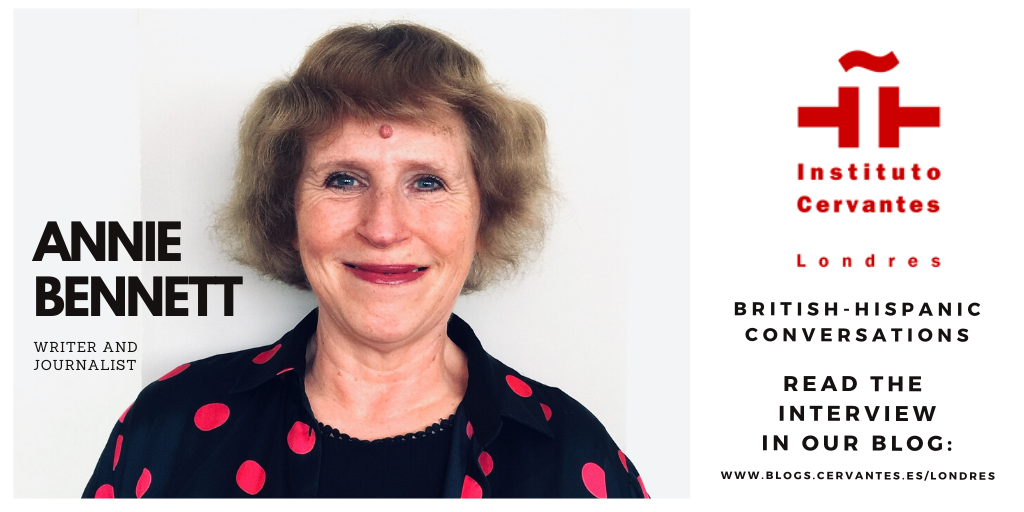
This week, we continue a series of interviews with personalities from the Spanish-British sphere. Our ninth guest, Annie Bennett, specialises in writing about Spain and is usually mooching around the country searching for the perfect tapas bar.
Bennett writes for The Daily and Sunday Telegraph and she is their Madrid expert. She has also contributed to The Guardian and Observer, The Times, The Financial Times, The Sunday Times Travel Magazine, The Independent and Independent on Sunday, Travel Weekly, Conde Nast Traveller, Tatler, Elle, Red, Time Out & various airline magazines.
Her latest book is Insight Explore Madrid (January 2018) and she has also written National Geographic Traveler Madrid, Blue Guide Madrid, Blue Guide Barcelona and Art Shop Eat Barcelona. She has won a few awards over the years, including Spain Travel Writer of the Year.
– You describe yourself as a food & travel writer mooching around Spain for Telegraph & other UK nationals. How did you get to this job? Why Spain?
I studied Spanish and German at the University of Westminster, specialising in translation and interpreting. As I had lived in Cologne for a couple of years before doing my degree, my German was much stronger than my Spanish, so after graduating I went to live in Madrid to try and improve it. This was the early 1980s and I was lucky enough to become friends with some of the key figures of the Movida, which opened the door to the dynamic creative scene. I became quite involved in the art world and started translating for galleries and museums. It wasn’t long before I started writing, just because I knew such interesting people really. I first interviewed Pedro Almodóvar back in 1985!
I moved back to London in 1992 for a few years, but my links with Spain became stronger than ever when I started travel writing. I wrote the Blue Guides to Madrid and Barcelona and started contributing to national newspapers and magazines. And I have just kept going with articles and books – my list of places in Spain I want to write about just gets longer and longer.

– You are based between Madrid and South Wales, is that the perfect combo?
My family is in South Wales and I do a lot of my writing here. I love the beaches of the Gower Peninsula, which are actually quite similar to those on the Rías Altas in Galicia. I’ve been here during lockdown and it is wonderful to be able to walk along the beach every day and explore Gower without tourists.
As I write about Spanish tourism for British people, it really helps to live a caballo between the two countries, to keep my finger on the pulse of what people are talking about and what they are familiar with in Spain, whether culture, gastronomy or tourism. I can’t assume that everyone knows who Velázquez or Rosalía are, for example. Now everyone buys chorizo in the supermarket and chucks it in everything (I’m not mentioning paella), but that certainly wasn’t the case 20 years ago. I’m currently reading María José Sevilla’s brilliant new book, Delicioso: The History of Food in Spain; we really needed a serious book in English about Spanish food and I’m really enjoying having the time to read it during lockdown.
– What places do you like visiting when you are in Spain? What topics do you like covering?
Madrid is home to me and I am champing at the bit to get back there. Something that has really surprised me during lockdown is how much I’m missing it and I have cried quite a few times watching videos and news reports of what is happening there.
But as 2020 is the centenary of the death of Benito Pérez Galdós, I am spending a lot of time in Madrid, albeit just in my head, by rereading Fortunata y Jacinta and his other wonderful novels. It is frustrating not to be able to take part in the walks and other events in the city organised to commemorate the anniversary, but as I know the streets and locations so well, it is almost like being there.
I love Valencia too and go a few times a year. I think it is a very underrated city, for culture and the urban beaches but more than anything the food. I could happily eat a rice dish for lunch every day. The produce there is so good and varied; I think it has one of the most dynamic gastronomic scenes in Spain, with fantastic chefs such as Ricard Camarena, Quique Dacosta and Bernd Knöller, to mention just a few. I’ve been going to Casa Montaña in the Cabanyal neighbourhood by the sea for more than two decades and it is my favourite tapas bar in Spain.
I find the area around Vejer de la Frontera on the Costa de la Luz quite intoxicating. The food scene is really interesting, there are fabulous beaches and I always seem to have a glass of sherry in my hand. One of the most exciting and memorable experiences I have ever had as a travel writer was being on one of the almadraba boats to witness the catch of bluefin tuna at close hand. I really enjoyed writing about this fascinating tradition – and eating just about every part of the tuna in the El Campero restaurant in Barbate.
I go the Hay Festival in Segovia every year, although I’m not sure if it is going to be possible this September. It is always one of the most enriching experiences of the year and listening to writers and artists talk about their work in convents, courtyards and gardens is just magical.
Lanzarote is a favourite too, although I hardly ever get to lie on a beach there. I have been writing about the ecotourism scene for the last decade or so and took part in the Saborea Lanzarote gastronomic festival last year. The cheeses and wines produced on the island are spectacular.
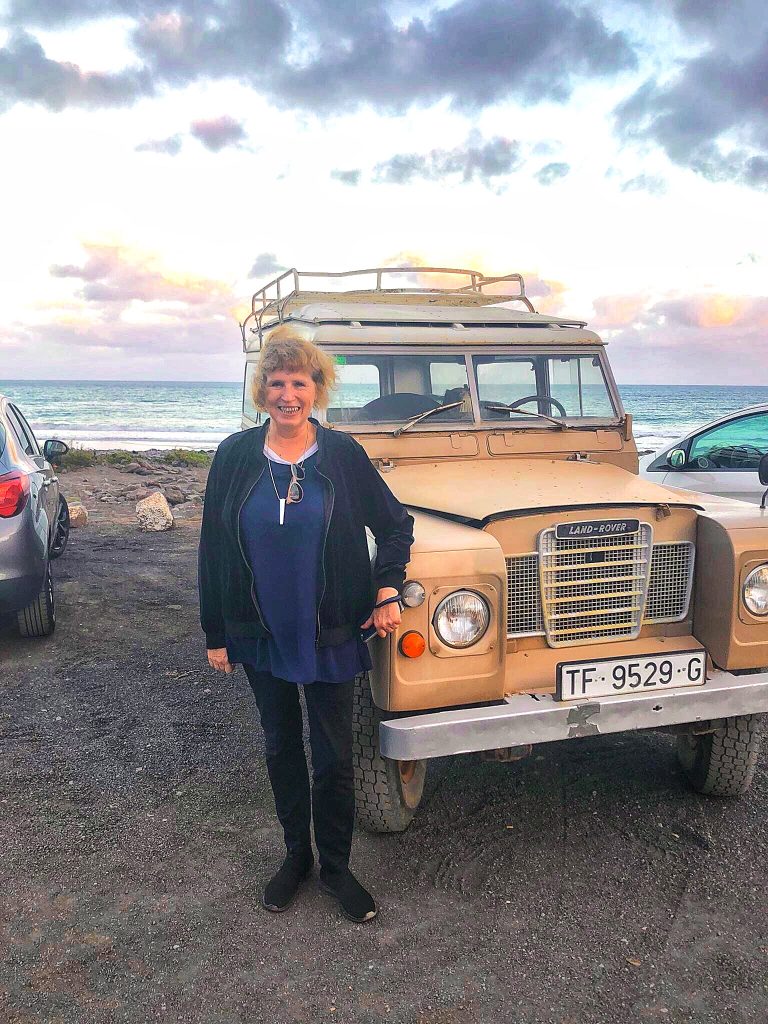
– How has the experience been? What do you enjoy the most about Spain?
Spending so much of my life in Spain means I really appreciate the moment, just enjoying where I happen to be. I love being in places some people consider unfashionable or not cool. I don’t care about that; in fact it’s a positive advantage to me. I’ve got a long list of towns in this category to visit or revisit when we can travel again. Getting a taste of how people just quietly go about leading very enjoyable lives without having to shout about it, in places that don’t get written about much, is one of the best things about Spain for me. I am always singing the praises of Soria and Jaén and have written several articles about the extraordinary cultural heritage of Alcalá de Henares.
– You visit places off the beaten track, could you tell us your favourite spots?
I’ve been a regular visitor to the Alpujarras for a long time, ever since I became fascinated by this magical mountain area after reading The Silence of the Sirens by Adelaida García Morales. She captured the hypnotic atmosphere of the astounding landscape so well. I was thrilled a few years ago to actually meet a curandera while walking down a track with a friend who lives there, as these local faith healers play an important part in the book.
Of course, the Alpujarras have become much more well known as so many people have read the wonderful books by Chris Stewart, since his best-selling Driving over Lemons was published two decades ago. Somewhere that still feels remote, however, is Babia, in the north-west of León. I had been reading about the area for years before I actually made it there, mostly in books and articles by Julio Llamazares and Luis Mateo Díez.
More recently, I was lucky enough to spend some time just over the border from Babia in the Somiedo area of Asturias, where brown bears prowl around the mountains. Getting up before dawn to go and spot them with local experts was a brilliant experience.

– You wrote an article with 20 reasons why British travellers will all return to Spain when this is finally over: boozy lunches, fast trains, slow trains, jamón, prawns, aperitivos, paradors, beaches… are you ready to go back?
While I am dying to return to Spain, I think I’m going to see how the situation develops as I am a bit wary about the potential health risks involved with being in airports and flying. I just want to be there without having to do the travelling really. I’m thinking it might be a good plan to enjoy the Gower beaches over the summer and start my Spain explorations again from September, although I’m not sure I’ll be able to wait that long.
– In Spain we have rural houses all around the country, have you ever stayed in one? Do you have any favourites?
As I review so many hotels, I don’t get to stay in as many rural places as I would like. I am however a big fan of rural tourism and have been writing about it for more than 20 years. There are so many extraordinary places to stay in the countryside and on lesser-known parts of the coast. I’ve stayed in some gorgeous houses and small rural hotels in Cabo de Gata in Andalucía, Cantabria, Asturias, Galicia and the Canary Islands. I stayed in an amazing house in Lanzarote that was actually a converted water cistern but looked like something from a James Bond film.
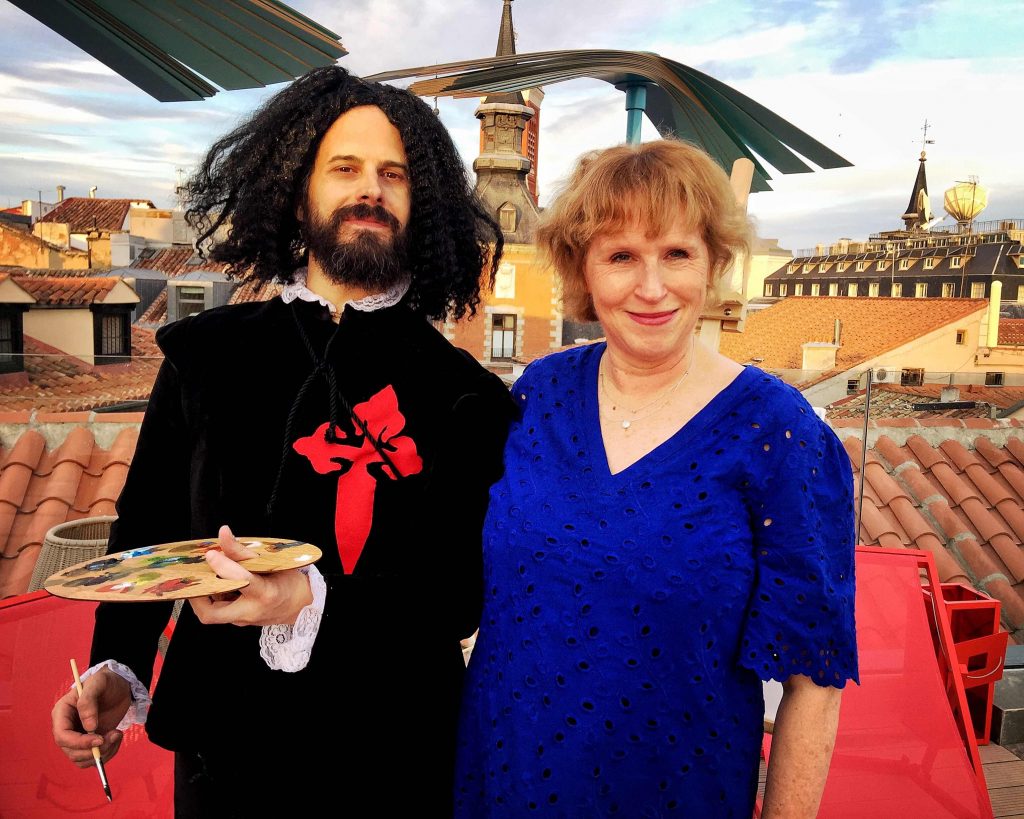
– Now it is easier to find Spanish ingredients and products in the UK. Which ones were always the hardest ones to find? Which ones are always in your larder?
I don’t actually buy that many Spanish products in the UK as I am usually – before the pandemic obviously – travelling backwards and forwards so frequently. Looking in my cupboards, I have pimentón, saffron, jars of good tuna and tins of sea urchin paté and anchovies. There is always a good supply of turrón and Paladín hot chocolate, which are my mother’s favourites. I always have quite a few olive oils from different parts of Spain as well as sherry vinegar. I seem to have got through most of my stock of Spanish wines and sherries though….
It is wonderful that now it is easy to get excellent olive oils, ham, cheeses, paella rice and wines from fantastic producers, delis and restaurants such as José Pizarro and Brindisa. Here in Wales we are lucky to have the Bar 44 and Ultracomida groups, who are absolutely passionate about Spanish produce and have been doing some great live tasting events during lockdown.
Getting to Know Ibero-American Classical Music: 5 Pieces to Start You Off
Pianist, Latin Classical music expert and Artistic Director of the Iberian & Latin American Music Society (ILAMS), Helen Glaisher-Hernández, recommends five pieces of Ibero-American classical music to our readers by way of introduction to this exuberant repertoire.
«I would highlight the following pieces of 20th-century repertoire which, for me, stand out for their ingenuity and originality,» says Glaisher-Hernández. The following list includes works that «conjure up imaginary musical landscapes, capable of opening doors into different, new dimensions through their ability to articulate otherworldly sounds and textures. It’s through pieces like these that we can observe Spanish and Latin American composers making genuinely original contributions to classical music that go beyond the mere ‘echoing’ of conventional European trends, as the Cuban writer, Roberto Retamar, famously put it,» adds Artistic Director of ILAMS.
- Xochipilli: An Imagined Aztec Music (1940)
Carlos Chávez (Mexico)
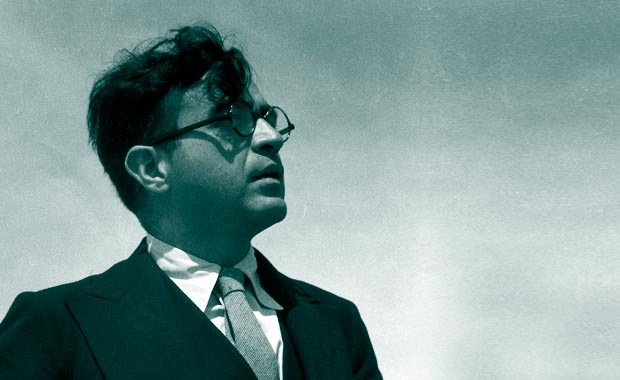
Carlos Chávez was known as one of the ‘Big Three’ Latin American composers of the early-to-mid 20th century, along with the Brazilian composer, Heitor Villa-Lobos, and the Argentine composer, Alberto Ginastera. The enormity of Chávez’ musical imagination and his revolutionary achievements influenced many subsequent generations of composers and changed the course of classical music-making throughout the Americas and beyond.
A child of the Mexican Revolution, Chávez became a leading feature of the so-called ‘Mexican Renaissance’ – a flowering of socialist writing, mural painting and architecture that took place in the wake of the Revolution – alongside other intellectuals and artistic figures such as Diego Rivera and José Clemente Orozco. A central focus of this movement was a desire to bring the masses into the fold of the arts, in part by celebrating the indigenous oppressed, and Chávez’ music is replete with references to native Mexican music and culture.
In this vein, Chávez is best known for his Symphony No. 2 ‘Sinfonía india’, but for me it is the much more radical Xochipilli which most vividly invokes the Mexican Indian, in the form of the eponymous Aztec god of flowers, music and dance. Composed in 1940 for winds and percussion, the work was commissioned by Rockefeller for a MoMA exhibition in New York titled Twenty Centuries of Mexican Art. Chávez designed the piece so as to didactically showcase the Aztec instruments he was actively researching, but in doing so he also produced a radical and compelling piece of art, and a tour de force for any percussion section, requiring all sorts of weird and wonderful indigenous Mexican instruments. I programmed this piece at the Southbank Centre in 2012 as part of a ‘Revolutionary Concert’ celebrating the collective Latin American bicentenaries of independence, and I remember spending an inordinate amount of time trying to track down ‘hawksbells’, amongst other things.
Anyone listening to this piece who has ever visited Mexico’s pyramids and archaeological sites (and even those who haven’t) will find themselves plunged into the pre-Hispanic world in a very compelling way. A work of tremendous power, to hear it performed live feels like coming face to face with the might of the entire Aztec empire – especially as the piece gradually moves towards the formidable climax of its final movement. Chávez appears to achieve the impossible: to transport us back in time to pre-Columbian Mexico and resurrect the Aztec himself. If you can’t hear this music in concert, make sure you have the volume on your stereo speakers at home cranked up to the maximum!
A wonderfully off-the-wall, funky and fun piece, Xochipilli belies so much of Chavez’ other characteristically astringent music, which is well-known for being difficult to listen to. In contrast, I celebrate this work as an example of how, for those with less adventurous tastes at least, atonal and polytonal music can be just as beautiful and exciting as any other.
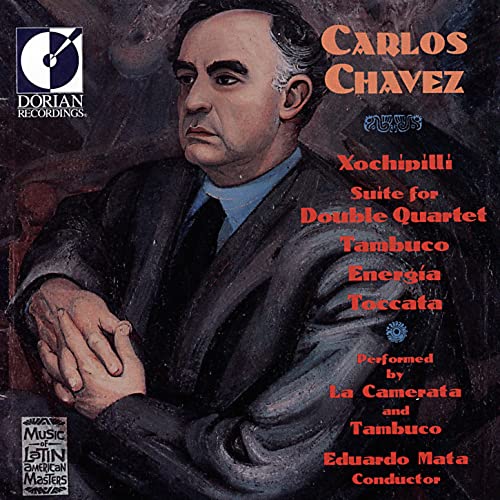
For listening, I recommend the version by Mexico’s Tambuco Percussion Ensemble performing with La Camerata on the 1994 album, ‘Carlos Chávez’.
2. Motet em ré menor ‘Beba Coca-Cola’ (1967)
Gilberto Mendes (Brazil)

This is another piece I programmed for my ‘Revolutionary Concert’ at the Southbank Centre in 2012. Out of a later period of left-wing politics, from 60s Brazil, emerged a work that speaks to Latin American anxieties over the rising dominance of American economic imperialism, offering a caustic musical indictment of the ‘contamination’ of Brazilian society by the unchecked importation of American cultural values. The Motet in D Minor, also known by the sobriquet ‘Beba Coca-Cola’ (‘Drink Coca-Cola’), is a work for mixed choir by the Brazilian composer Gilberto Mendes, based on the homonymous 1958 text by the Brazilian poet Décio Pignatari. And it is, in my opinion, nothing less than a Postmodern masterpiece.
Writing in the verbivocovisual ‘Concrete Poetry’ tradition, Pignatari plays on the marketing jingle of the multinational soft drinks company – Coca-Cola being one of the most recognisable symbols of capitalism worldwide, and advertising being part of capitalism’s essential, nefarious machinery – in order to attack the ‘system’ from within in true Postmodern fashion (instead of from the outside). The slogan-subject, ‘Beba Coca-Cola’, is turned in on itself in an act of metaphorical autosarcophagy that evokes Karl Marx’s assertion that ‘capitalism tends to destroy its [own] two sources of wealth: nature and human beings’. In both the poem and the musical work, the syllables of this sound bite are perpetually scrambled and re-scrambled in a musical gesture of anti-propaganda, the words ingeniously twisted in all directions to proffer various sorts of mischievous and derogatory semantics. ‘Babe cola’, for example (in Portuguese) alludes to the ‘drooling’ of coke, whilst ‘caco’ implies the imbibing of broken glass.
This babble provides an inexorable ostinato chant throughout the piece; a parody of the relentless subliminal message of the sales pitch. (It reminds me, more specifically, of a more recent Christmastime UK Coca-Cola ad – you know: the one where they sing ‘Holidays are coming… Holidays are coming…’). In counterpoint with this ‘mantra’, the composer scores a succession of onomatopoeic tricks, employing extended techniques such as spoken vocal lines, glissandos and breathy effects to mimic sounds such as the opening of the bottle and the escaping gas, the intoxicating effect of the bubbles. Use of microtonality incites a feeling of nausea, whilst menacing, almost gothic, dissonant intervals threaten the approach of very real malady. Eventually this bilious prattle finds relief in the form of a glorious belch by a male soloist. (I should add that this is by no means easy to pull off in the context of a live performance, as I found out with my own singers. I would strongly recommend that any choral directors attempting this piece have a burp machine on standby!)
The piece resumes only to descend into anxious cacophony, as the chant builds into an aggressive protest. If by now the listener hasn’t already got the message, the ending punch line makes the moral of the piece crystal clear, with a final re-fashioning of the slogan into a new, unequivocal word: ‘cloaca’ (‘sewer’, or ‘cesspool’). The deconstruction of the jingle is thus complete; capitalism is exposed as poisonous filth. Through ample use of the delights of the Postmodern toolkit (satire, sarcasm, repetition, intertextuality and self-consciousness), Mendes achieves a persuasive repudiation of the act of unbridled consumption itself.
The response of Coca-Cola to the premiering of this piece provides a perfect coda to the story of its composition. In lieu of the reprisals Mendes had anticipated, Coca-Cola instead sent one of their representatives to deliver a box of soft drinks to him in person, by way of thanks for ‘advertising’ the brand. ‘Speak good or bad, but talk about me,’ was the representative’s rationale. It brings to mind an aphorism often attributed to Lenin: ‘The last capitalist we hang shall be the one who sold us the rope.’
As far as I’m aware, there are no commercial recordings of this piece, or at least none that are readily available. Don’t ask me why, although given the work’s politics this seems somehow appropriate. Luckily, however, there is a nicely-filmed video clip on Youtube, featuring a performance by the OSESP Choir, excerpted from the documentary, ‘A odisseia musical de Gilberto Mendes’. What’s also nice is that you get to see a shot of the composer at the end.
3. String Quartet No. 2 ‘Reflejos de la noche’ (1984)
Mario Lavista (Mexico)
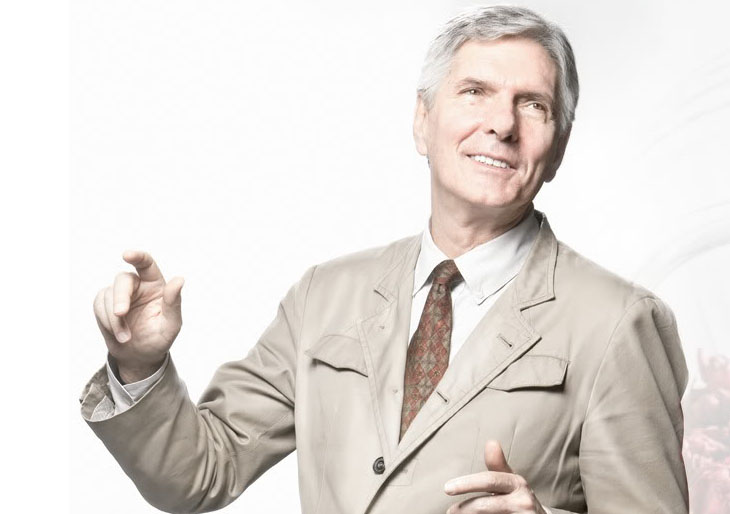
I first encountered this piece at a concert of Latin American music I attended at St John’s Smith Square many years ago featuring the Brodsky Quartet. It remains etched in my memory as one of the most incredible concerts I’ve ever attended, and the highlight was undoubtedly this piece.
Reflejos de la noche (Reflections of the Night), like Mendes’ Motet in D Minor, is another ‘festival’ of extended techniques and special timbric effects by contemporary Mexican composer, Mario Lavista. The composer’s assertion that ‘few instrumental genres have awoken the most intimate and refined imagination from composers as the string quartet’ is attested by the fact that this remains one of his most frequently performed works. In fact, following on from a long tradition of string quartet writing in Mexico, Lavista went on to write six string quartets in total, the majority of which were inspired by his acquaintance with the ensemble now widely-considered Mexico’s leading string quartet, the Cuarteto Latinoamericano.
In the score, Lavista offers some orientation in the form of a 1926 poem by the Mexican poet, Xavier Villarrutia, called Eco:
La noche juega con sus ruidos / The night plays with the noises
copiándose en sus espejos / copying them in its mirrors
de sonidos / of sounds
The work as a whole conveys a random, improvisatory feel that draws on the composer’s strong aleatory background. It is held together by a perpetual spring of gently imbricated harmonics, the ‘reflejos’ of the piece, which aimlessly float around the air like mosquitoes on a humid night. In Lavista’s own words, ‘using harmonics is, in some way, to work with reflected sounds; each one of them is produced, or generated by a fundamental sound that we never get to hear; we only perceive its harmonics, its sound-reflection.’ This gives the music an ethereal atmosphere not dissimilar to the whimsical, high-pitched interludes in the second movement of Ravel’s String Quartet in F Major. (After hearing Lavista’s piece, it may not surprise you to know that Lavista also wrote a work for oboe and eight wine-glasses!)
Other subtle textures are layered over each other – glissandi, trills and ricochet bowing help to bring all sorts of images to mind; the night sky, complete with the darting of shooting stars. The Mexicanist in me also hears the nocturnal hum of chirping crickets, and coyotes howling distantly in the background.
The repetitious and amorphous nature of the work leaves very little room for extended commentary, but that’s not to detract from its beauty; on the contrary, the work’s strength lies in the mesmeric sense of stasis that Lavista is able to sustain throughout the piece. …And so in the end, the piece doesn’t really, well…end; it just slowly and gently evaporates into the night…
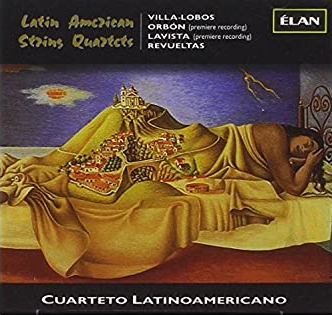
The definitive version of this piece to listen to, historically speaking, is naturally the 2001 world premiere recording by the Cuarteto Latinoamericano, ‘Latin American String Quartets’ (but for sentimental reasons I also like to listen to the Brodsky’s version on their album, ‘Rhythm and Texture’).
4. Paisajes: ‘El lago’ (1947)
Frederic Mompou (Spain)
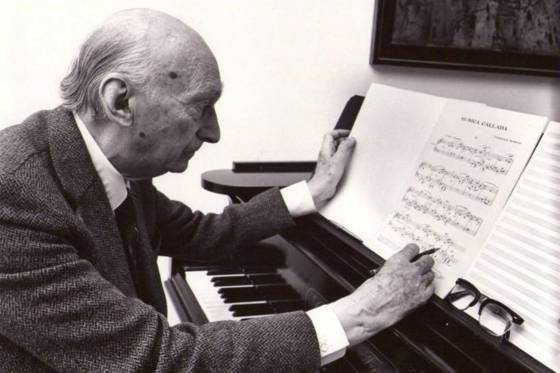
In some ways this piece is not very far removed from the contemporary Impressionism of Mario Lavista’s Reflejos de la noche, but if tonality is more your thing, you can’t fail to love this sublime miniature, ‘El lago’, by the Catalan composer, Frederic Mompou. I first encountered the music of Mompou when I was studying at Trinity College of Music in London with Elena Riu – a leading exponent of his music with whom I worked on several of his pieces.
I should start with the caveat that any pretensions to crystallise Mompou’s art in words are, in a sense, self-invalidating, since Mompou’s music is ultimately an expression of the ineffable and the esoteric; the privileging of the poetic over the prosaic. Or, as Schwerké more eloquently put it, ‘there is no exegetical system or method of chemical analysis nice enough to discover his secret.’
Mompou was really a magician in the guise of a composer; music his unique brand of transcendental magic. His first-ever composition, Cants magics (Magic Spells) is oneI’ve delighted in performing many times. But his interest in subjects such as magic, witchcraft, and even shamanism, are indicative of a more profound concern with spirituality more broadly. Mompou’s approach to composition was heavily informed by the mysticism of the Spanish Golden Age, the writings of St John of the Cross prompting pieces such as Cantar del alma and his Música callada (Silent Music), the work which best encapsulates his musical philosophy and which has been described as his magnum opus.
…That is, if ‘magnum’ is indeed a word we can apply to this music; Mompou prefers the small in scale, the intimate performance space, and the sparsely-notated score. He weaved a personal style of minimalism that allowed him to achieve maximum expression within the minimum possible means, and revelled in subtracting as many ‘unnecessary’ notes from the final work as possible. ‘I don’t compose music; I de-compose it’, he once said. These qualities, paired with a longing to rediscover the lost sensibilities of childhood, its joy and naivety, convey a kind of primitivism that led Wilfrid Mellers to describe Mompou’s music as a return to Paradise after the Fall. Whilst Stephen Hough refutes the notion that Mompou deserves a place in the hall of the ‘great’ composers, I would venture that he is, in fact, perhaps the greatest of all composers, for, free from the vanities of self-awareness, such as pretense and affectation, his music seems to touch the very forces of Creation itself.
Mompou stands apart from all his Spanish (and indeed non-Spanish) musical contemporaries; the ultimate iconoclast. ‘Quite simply put, Mompou is Mompou – there is no other music quite like his,’ say Rawlins/Hernández-Banuchi. An infamous introvert, he eschewed all ‘isms’, fads and fashions in favour of finding an independent, uncompromisingly personal voice and language. As such, he succeeded where most 20th-century composers failed: to discover an entirely fresh, tonal currency of exquisite and provocative harmonies without ever lapsing into even the slightest suggestion of kitsch or sentimentality. With the art of an alchemist, he turned dissonance into euphony.
There are traces of French influences (Mompou lived and studied in France for 30 years), but Mompou is certainly no mere ‘Spanish Debussy’ or ‘Spanish Satie’ – although his music is profoundly Spanish. There are brief, ubiquitous echoes of Catalan folk tunes, and a proliferation of the bright, metallic sonorities of local church bells. (It is no coincidence that Mompou’s grandfather owned a bell-foundry). But more fundamentally, there is a kind of dark side to his music that only Spanish artists are capable of.
‘El lago’ (‘Lake’) from Paisajes (Landscapes)is my absolute favourite of Mompou’s works. More than an archetypally pastoral image that the piece’s title might suggest, or the cascading fountains of Barcelona’s Montjuic Park that inspired it, the piece really reminds me, in a very personal way, of my experience of standing before the natural subterranean pool at the otherworldly concatenation of volcanic caves in Lanzarote known as Los Jameos del Agua. The eerie stillness of the cavern is evoked in repeated, undulating pianissimo chords, lending a hypnotic timelessness to the opening section of the piece that lulls you into a (false) sense of forgetful oblivion.
This is interrupted by the micro-dramas of a more disturbing middle section where Mompou reveals his fiery Spanish side with waves of cascading arpeggios. Mompou’s understanding of the piano’s resources allow him to showcase the sparkle of the instrument’s top register, contrasted sharply with its deep, resonating bass. Interspersed are dramatic shimmery tremolo passages that recall the swarming apian trills of Falla’s ‘Danza ritual del fuego’ (‘Ritual Fire Dance’), which are followed by slow, deep, pondering monophonic passages that provide added layers of enigma and obscurity. What’s satisfying is hearing the pauses between the phrases; contemplating the beauty of the decaying sound, reverberating as if in an echo chamber.
In the final section, disquiet gives way to tranquillity as the piece reprises its original idea. This is typical of Mompou: tension, if not resolved, is, at least, gently dissipated. All emotions – both positive and negative – are embraced and co-exist on equal terms, expressed spontaneously, moment-to-moment, rather than as part of a grand scheme, so that any sense of angst is fleeting and soon forgotten. Part of Mompou’s genius lies in this ability to conjure up several conflicting emotions, not only within the same piece, but at the same time – an impressive feat made all the more awesome given the brutal economy of his means. Perhaps that’s why the atmosphere of this piece is so difficult to put your finger on: the slow sections are melancholic in a detached, accepting kind of way, like the vague memory of a trauma long overcome. But paradoxically, there is also contentment, mystery and even danger, alongside other sensations more difficult to grasp. Both disturbing and reassuring at once, the music would seem to provide an emollient antidote to its own discomfort, thus offering a ‘therapeutic’ kind of listening experience in which pain is transcended through its own validation. Indeed, I highly recommend listening to Mompou if you are feeling in need of some emotional healing. It’s like balm to the soul.
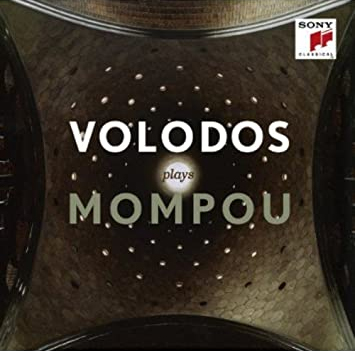
The bad news is that although there are many available recordings of this piece, most are, quite frankly, massacres of Mompou’s music. Ironically, despite (and perhaps because of) the apparent simplicity of Mompou’s writing, his music demands a pianist of an equal capacity for nuance and understatement as its author, and ‘El lago’ especially is a piece to really sort the wheat from the chaff. Stephen Hough puts it slightly differently: ‘There is nowhere for the sophisticate to hide with Mompou. We are in a glasshouse, and the resulting transparency is unnerving, for it creates a reflection in which our face and soul can be seen.’
The good news is that amongst the wheat we can count on the sublime Arcadi Volodos, whose version on the album, ‘Volodos Plays Mompou,’ remains, for me, unmatched, and untouchable. I would even go far as to say that it surpasses the composer’s own recorded performances. Volodos is able to really maximise the music’s possibilities and make it speak. His extraordinary ability to sound-paint yields levels of pianissimo you never knew existed. Crucially, he also has an intelligent grasp of timing and an audacious and dynamic talent for rubato, always sensitive to the unfolding writing, and with an expansiveness in all the right places that heightens the music’s mystique.
Mompou was also a celebrated concert pianist before he started composing, and there is a vintage recording of him performing his entire piano catalogue that is also worth checking out: ‘Mompou: Complete Piano Works’. My only reservation with this album in the strange reverb in the production – I can’t decide if it adds to the effect of the music, or just makes it sound distorted.
5. Tango Suite (1984)
Astor Piazzolla (Argentina)
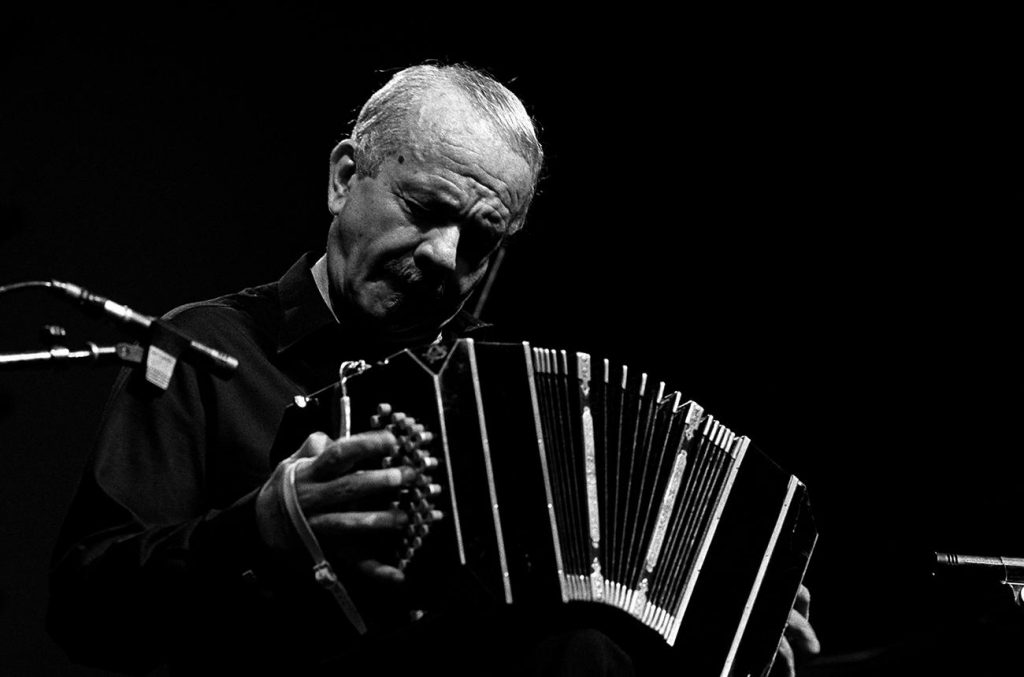
Last, but by no means least, I could hardly miss out Astor Piazzolla – not only because, in our time, this Latin American composer has now overtaken all others as the most famous and most popular internationally – but also because Piazzolla is where my passion for Latin Classical truly began.
Growing up learning the piano, I was naturally familiar with famous names like Falla, Albéniz and Villa-Lobos, as canonised by the ABRSM. A musicologist in the Canary Islands also introduced me to the vibrant piano music of Ernesto Lecuona, who remains one of my favourite composers. But it wasn’t until my year abroad in Buenos Aires that I began to realise the enormity of this ‘Latin Classical’ phenomenon, and it was Piazzolla who opened the door. I went to a lot of concerts with friends from my year group at the conservatoire, and Piazzolla seemed to be everywhere. One event that sticks in my memory is an anniversary concert we attended at the Teatro Colón (that year, 2002, marking ten years since the composer’s death). After that, I was completely hooked.
I think the Tango Suite for two guitars is probably the first piece by Piazzolla that I listened to. It’s worth noting that Piazzolla’s music covers the whole spectrum of music from the extremes of classical to popular, and everything in between (which often makes it difficult to categorise). Ironically, in classical circles Piazzolla is often better known for his more popular output, his classical works being performed only very rarely. These are what Allison Brewster Franzetti has characterised collectively as ‘the unknown Piazzolla’. This is a shame because this is where some of Piazzolla’s most interesting music is to be found. If you’d like to explore Piazzolla’s more classical side, the Tango Suite is a great place to start.
The Tango Suite was commissioned by the formidable Brazilian classical guitar duo, the Assad Brothers, who premiered it in Paris in 1984. The work broke new ground within the guitar duo repertoire, employing a dazzling array of resources, including numerous extended techniques and percussive effects.
Written in three movements, the work opens with echoes of Piazzolla’s evergreen Histoire du tango, but soon reveals itself as a relatively more complex, mature and ‘contemporary’ piece – that is, without ever descending into pure academicism. Indeed, one of the delights of this work for me is the way in which Piazzolla seems able to seamlessly syncretise popular material with more experimental methods; his talent for naturalistically reconciling the topical with the abstract. Even in Piazzolla’s more classical works, however, the tango is never far away (albeit more, or less, sublimated) and in this piece we can also hear tango rubbing shoulders with some of Piazzolla’s other major influences: jazz, Bach, Ginastera and even Stravinsky. The result is an ‘urban’ species of ‘classical cool’ which simultaneously challenges its performers to demonstrate their grasp of the ‘swing’ of the tango whilst also having to negotiate the exacting demands of the most difficult of classical guitar techniques. I think this urban cosmopolitanism is one of the reasons why Piazzolla has found particular favour today amongst slighter younger audiences.
The slower, second movement is very lyrical, conveying the more languid, sultry side of the tango, and this offers some brief respite before the piece launches into the exhilarating, relentless drive of the final movement. Here, Piazzolla lets his imagination really run wild, lurching capriciously between ideas, moving restlessly between unexpected harmonies. A (slightly) more contemplative middle section cedes to the finale: an unstoppable rollercoaster ride of further adventures through precarious harmonic and rhythmic turns. This final movement in particular interweaves a pleasing dichotomy of melody and rhythm that is particular only to Piazzolla.
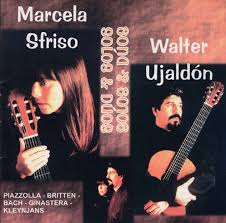
There aren’t many recordings of ‘Tango Suite’ out there – I suspect for the same reason that there are so few live peformances – because, technically speaking, it’s at the harder end of the guitar repertoire. The best version I’ve come across to date is the 1998 recording by Argentine guitarists Walter Ujaldón and Marcela Sfriso. Ujaldón was on the guitar staff at the Conservatorio Nacional Superior when I was there in 2002 and I had the pleasure of hearing him perform it with Sfriso in concert. Unfortunately, their album, titled ‘Solos y duos: Piazzolla, Britten, Bach, Ginastera, Kleynjans’, has long been deleted and is difficult to get hold of these days, but I have seen second-hand copies advertised for sale on the internet, so it’s worth doing a search.
In addition, the key version to listen to is the world-premiere recording, ‘Latin American Music for Two Guitars,’ by the Assad Brothers, for whom the piece was written. The Assads are undoubtedly brilliant in everything they do, but for me this interpretation lacks the more authentic, slower tempo and Argentinian rubato of Ujaldón/Sfriso in favour of a more typically frenetic Brazilian attack. In this, the piece loses some of the sensuality and pathos that lends it greater ‘tangitude’ and local meaning.
Por el futuro: hagamos que las relaciones culturales cuenten en una sociedad global post-crisis

La pandemia del Covid-19 está teniendo un efecto demoledor en la labor de las relaciones culturales internacionales. Actividades y colaboraciones en todo el mundo han sido canceladas o pospuestas y la mayoría de espacios culturales se han visto forzados a cerrar sus puertas. Artistas y organizaciones, incluyendo nuestros miembros, se han visto gravemente afectados por la abrupta interrupción de sus actividades, que dependen en gran medida del encuentro y la colaboración entre personas más allá de las fronteras. Los Agentes en el sector han acudido al ámbito digital como respuesta inicial, pero, ¿cómo seguir avanzado a largo plazo? ¿Cómo podemos garantizar que, después de la crisis, las relaciones culturales continúen aportando confianza y entendimiento mutuos entre el entorno europeo y el resto del mundo?
- Consecuencias del Covid-19 en el ámbito de las relaciones culturales
Con el objetivo de obtener una visión de conjunto de la situación que enfrentan las relaciones culturales, EUNIC está documentando y analizando el impacto de la crisis en sus miembros. Algunas de las conclusiones más relevantes son:
- Se estima que los miembros de EUNIC han perdido alrededor de 6,6 millones de euros de ingresos debido al cierre de sus centros.
- El 85% de nuestros miembros ha cerrado temporalmente al menos la mitad de sus sedes en el mundo
- Al menos la mitad de ellos se han visto obligados a cancelar contratos con artistas y expertos
- Más de la mitad prevé suspender o reducir sus programas
- El 13% anticipa una reducción de plantilla
- Entre los miembros que han necesitado buscar nuevas fuentes de ingresos, el 40% ha recurrido a cobrar por su oferta cultural y el 30% ha solicitado financiación privada
- El 85% de los miembros no reúnen las condiciones para solicitar fondos gubernamentales de emergencia
Gobiernos nacionales, regionales y locales, así como otros actores del sector, han tomado medidas importantes para mitigar los efectos de la crisis y la Comisión Europea ha lanzado la plataforma Creatives Unite para recoger estas iniciativas. Nosotros nos unimos al conjunto de redes, organizaciones y personas de toda Europa que han llamado la atención sobre la grave situación de la cultura en esta crisis, demandando respuestas contundentes en apoyo al sector (Culture Action Europe, European Cultural Foundation, Europa Nostra, Miembros del Parlamento Europeo y otros muchos).
Sin embargo, muchos países de la Unión Europea se están centrando en dar una respuesta exclusivamente a nivel nacional, dejando de lado nuestra responsabilidad europea y global. Las barreras alzadas hoy por razones sanitarias no deberían convertirse en la norma. Este no es el momento en el que los países deban mirar únicamente hacia dentro.
Solo podremos superar esta crisis, recuperar el sector cultural global y restablecer las relaciones internacionales haciendo posible que personas de todo el mundo puedan encontrarse y colaborar libremente.
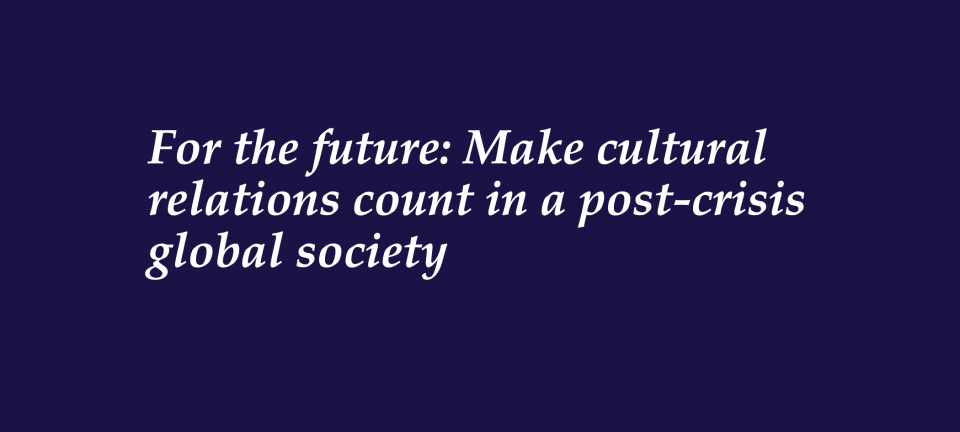
2. La importancia de las relaciones culturales internacionales
Las relaciones culturales generan un espíritu de diálogo y solidaridad global, y pueden ser la clave de una solución que nos mantenga conectados, resilientes y en un saludable estado mental ante la situación actual, lo que, a la vista de los enormes desafíos globales, se revela de una importancia sin precedente. Las relaciones culturales refuerzan la idea de una Europa compartida, aumentando su autorreflexión hacia una conciencia común de los valores compartidos.
Las relaciones culturales son fundamentales para generar confianza y entendimiento mutuos y construir un mundo más pacífico acercando a las personas a escala global. Las relaciones culturales han jugado un importante papel a la hora de promover relaciones pacíficas entre personas de todo el mundo.
Dado que todos los Estados miembros de la Unión Europea dedican una cantidad considerable de sus presupuestos a las relaciones culturales (2.900 millones de euros en 2019), y al mantenimiento de redes mundiales de institutos culturales, (con más de 2.500 centros y 35.000 empleados), dichas relaciones culturales han sido durante décadas un instrumento destacado de la política exterior.
Si bien la participación en la vida cultural mejora la salud y el bienestar, las relaciones culturales pueden repercutir positivamente en la resolución de conflictos, la construcción de la paz y la elaboración de políticas relacionadas. La investigación ha demostrado que el acceso a la cultura es el segundo factor más determinante para el bienestar psicológico.
La cultura crea empleo y competitividad y puede jugar un papel un papel relevante en la recuperación económica global. El empleo en el sector cultural de la UE hoy en día asciende a 8,7 millones de personas, convirtiendo a este sector en uno de los grandes empleadores, proporcionando 2 veces y media más trabajo a los europeos que el sector de la automoción. Con un superávit comercial de 8.700 millones de Euros en bienes culturales, se estima que los sectores cultural y creativo contribuyen con un 4.2% al PIB comunitario (EU Agenda for Culture, 2018).
La economía global está impulsada por la creatividad cultural, la innovación y el acceso al conocimiento. Las industrias cultural y creativa representan alrededor de un 3% del PIB global y 30 millones de puestos de trabajo (UNESCO, 2016). Si bien el comercio mundial de productos creativos se ha duplicado con creces entre 2002 y 2015, creciendo a un ritmo del 7% anual, la creación de capacidad mutua y el fortalecimiento de las industrias culturales y creativas estimulan el empleo, capacitando a los jóvenes y a las mujeres para contribuir a unas economías resistentes (UNCTAD, 2019).
3. Formas de avanzar
Para contrarrestar el aislamiento de las políticas culturales se necesitan iniciativas transnacionales que conecten artistas y profesionales más allá de las fronteras, para que el intercambio cultural y el diálogo intercultural puedan así florecer.
Para avanzar en la construcción de la paz es necesario llegar a las personas, a través de la cultura, más allá de las fronteras a escala mundial. Como dijo el AR Josep Borrell en el Día Mundial de la Diversidad Cultural para el Diálogo y el Desarrollo, “tres cuartas partes de los mayores conflictos en el mundo tienen una dimensión cultural. La reducción de la brecha entre culturas es urgente y necesaria para la paz, la estabilidad y el desarrollo”.
Los sectores culturales locales en todo el mundo necesitan apoyo. Muchos países no están en condiciones de dedicar recursos adicionales a los sectores culturales. En este sentido, la UE puede dar un paso adelante y desarrollar, junto con las autoridades y organizaciones de los países asociados, programas de apoyo que ayuden al sector.
La movilidad internacional no debe detenerse. Mientras que cuestionar nuestros hábitos de viaje y reducirlos por el bien del medio ambiente es absolutamente necesario, nuestras relaciones de amistad con el mundo dependen de que las personas puedan encontrarse. Solo aprendiendo unos de otros podremos desarrollar la confianza y deshacernos de nuestros miedos y prejuicios.
Nuestro Proyecto European Spaces of Culture experimenta con nuevas formas de participación en las relaciones culturales y debería ampliarse. Estos modelos pueden servir como formas de salida de la crisis, comenzando una nueva forma de hacer cultura en el futuro: justa, igualitaria y basada en la escucha y el aprendizaje mutuos, la co-creación y un enfoque de abajo arriba.
Debemos adaptar nuestra forma de trabajar en el ámbito digital, encontrando nuevas formas híbridas de hacer relaciones culturales más allá de la crisis. Aunque la necesidad de reuniones cara a cara seguirá siendo permanente, el 81% de los miembros de EUNIC está estudiando la posibilidad de desarrollar formatos híbridos que combinen la presencia física con el contenido virtual. Y mientras exploramos los medios digitales, no debemos dejar a nadie atrás. Las comunidades sin infraestructura digital también deben ser incluidas en los programas que desarrollamos para unir a las personas.
Al igual que el patrimonio cultural es importante para los europeos, ciertamente también lo es para los habitantes de otros continentes. El 71% de los europeos está de acuerdo con la afirmación “vivir cerca de lugares vinculados con el patrimonio cultural europeo puede mejorar la calidad de vida” (Eurobarómetro 466). Trabajar en el patrimonio cultural en el marco de las relaciones culturales puede ser un punto de apoyo para unir personas y comenzar un discurso honesto y significativo con comunidades en otros países sobre nuestro pasado y nuestras responsabilidades
Las relaciones culturales juegan un papel importante en la recuperación económica global. La creación de bienes culturales y la participación en la cultura crean una cantidad significativa de empleos. Empleos que aportan valor, empatía, paz y sentido de pertenencia a las comunidades. Invertir ahora en cultura junto con nuestros socios es la decisión más acertada para salir de la crisis lo más indemnes posible.
4. Lo que debemos hacer ahora
“La cultura está en el corazón del progreso y puede jugar un papel fundamental en el periodo posterior a la actual crisis”. Ante esta declaración conjunta del AR Josep Borrell y la Comisaria Mariya Gabriel publicada el 21 de mayo de 2020, debemos aprovechar la oportunidad de situar las relaciones culturales en el centro de nuestros esfuerzos para combatir los efectos y repercusiones del brote de coronavirus. Dado que la cultura ha demostrado ser esencial para sostener nuestras sociedades en momentos de crisis, es preciso protegerla de los recortes presupuestarios en los marcos financieros posteriores a la crisis y aumentar sustancialmente los presupuestos de la UE destinados a estos sectores.
Por ello, hacemos un llamamiento a todos los actores de las relaciones culturales para:
- Implementar medidas para que la cultura pueda conectarnos a nivel mundial, compartir valores para mejorar las relaciones internacionales y aprender de las prácticas de cada uno, incluyendo el apoyo a los miembros de EUNIC
- Mirar más allá de las fronteras nacionales y aunar esfuerzos para gestionar la crisis de forma multilateral
- Demostrar el poder de la cooperación efectiva ante los desafíos globales de nuestro tiempo, incluyendo una mejor coordinación de todas las actividades de la UE en el ámbito de las relaciones culturales
- Invertir más en una política exterior conjunta de la UE que conceda un papel adecuado a las relaciones culturales.
- Fortalecer las estructuras organizativas y financieras de la UE, incluyendo la Comisión Europea y el Servicio de Acción Exterior Europeo, para que se involucren en la cultura
- Continuar invirtiendo en cooperación cultural europea, resistirse a los recortes presupuestarios tanto a las redes culturales como a la creación de capacidad conjunta y a las actividades sobre el terreno en el ámbito de las relaciones culturales
- Apoyar las iniciativas multilaterales dentro de la estrategia de la Unión Europea para las relaciones culturales internacionales
- Continuar invirtiendo en cultura dentro de los programas de cooperación al desarrollo
- Fortalecer el componente internacional de Europa Creativa
- Fortalecer las iniciativas existentes, tales como European Spaces of Culture, que puedan contribuir a la superación de la crisis
- Lograr que el apoyo a los entornos culturales locales sea una prioridad global
- Participar en formas digitales e híbridas de trabajar en las relaciones culturales
- Aprender mutuamente de las prácticas actuales y futuras de cada uno a través de procesos de abajo-arriba
Juntos, EUNIC y sus miembros, están preparados para hacer su parte.
For the future: Make cultural relations count in a post-crisis global society

The Covid-19 pandemic has a crushing effect on the work of international cultural relations. Activities and collaborations worldwide are cancelled or postponed, while most cultural venues are forced to close their doors. Artists and organisations, including our members, are severely affected by the abrupt discontinuation of their activities, which rely so heavily on people coming together to collaborate across borders. Actors in the field moved to the digital realm as an initial response, but how to go forward in the longer term? How can we ensure that, after this crisis, cultural relations continue to bring trust and understanding between the people of Europe and the wider world?
- Covid-19 effects on cultural relations work
In order to get an overview of the situation confronting international cultural relations, EUNIC is documenting and analysing the impact of the crisis on its members. Some major findings:
- An estimated 6.6 million euros of income was lost by EUNIC members due to branches closing.
- 85% of members temporarily closed at least half of their branches worldwide.
- Almost half were forced to cancel contracts with artists and experts.
- More than half foresee discontinuing or downsizing programmes.
- 13% are concerned about staff downsizing.
- Of those members who had to resort to new ways of gathering income, 40% have started to charge for their cultural offerings and 30% have applied for private funding.
- 85% of members are not eligible to apply for emergency government funding.
National, regional and local governments and other actors have taken important measures to mitigate the crisis and The European Commission has launched the Creatives Unite platform to gather such initiatives. We join a chorus of networks, organisations and individuals across Europe who have flagged the dire situation of culture in this crisis, calling for strong responses in support of the sector (e.g. Culture Action Europe, ECF, Europa Nostra, Members of the European Parliament, and many more).
However, many EU countries are focusing only on a response at national level, leaving behind our joint European and global responsibility. Barriers currently raised for public health reasons should not remain the norm. Now is no longer the time for countries to look inwards.
The crisis will only be resolved, the global cultural sector will only recover, and international relations will only be restored if peoples of the world are enabled to meet and collaborate freely with one another.
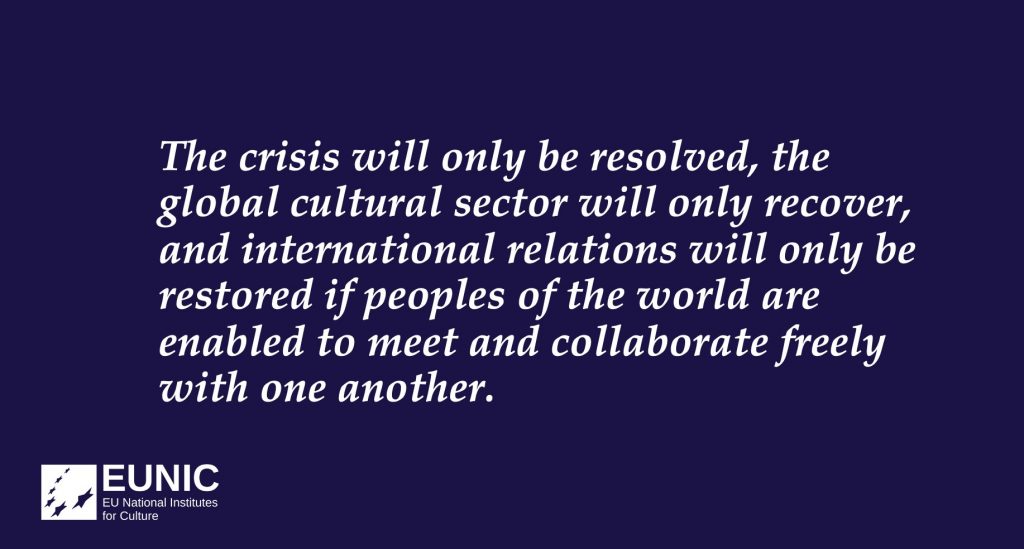
2. The importance of international cultural relations
Cultural relations generate a spirit of dialogue and global solidarity. Cultural relations can be at the heart of the solution to remain connected, resilient and in good mental health in the current situation. In the face of a truly global challenge, this is more important than ever. Cultural relations strengthen the idea of a shared Europe, increasing its self-reflection towards a common awareness of joint values.
Cultural relations are key in creating trust and understanding and a more peaceful world by bringing people together on a global scale. Cultural relations have played an important role in fostering peaceful relations between the peoples of the world. With all EU Member States dedicating a considerable amount of their budgets to cultural relations (EUR 2.9 billion in 2019), maintaining world spanning networks of cultural institutes (more than 2,500 branches with more than 35,000 staff), cultural relations have been over decades a prominent tool in foreign policy.
While cultural participation improves health and well-being, cultural relations can positively impact conflict resolution, peace building, and related policy development. Research has demonstrated that cultural access is the second most important determinant of psychological well-being.
Culture creates jobs and competitiveness and can play an important role in the global economic recovery. EU cultural employment is today at 8.7 million, making the sector one of the largest employers and providing jobs for 2.5 times more Europeans than the automotive sector. There is a EUR 8.7 billion trade surplus in cultural goods, and cultural and creative sectors are estimated to contribute 4.2% to EU gross domestic product (EU Agenda for Culture, 2018).
The global economy is driven by cultural creativity, innovation and access to knowledge. Cultural and creative industries represent around 3% of the global GDP and 30 million jobs (UNESCO, 2016). While global trade in creative products has more than doubled between 2002 and 2015, growing at a rate of 7% annually, mutual capacity building and the strengthening of the cultural and creative industries stimulate jobs, empowering youth and women to contribute to resilient economies (UNCTAD, 2019).
3. Ways forward
To counter the isolation of national cultural policies, transnational initiatives connecting artists and professionals across borders are being called for so that cultural exchange and intercultural dialogue can flourish.
To continue peace building, reaching out to people worldwide through culture is needed. As HR/VP Josep Borrell said on the World Day for Cultural Diversity for Dialogue and Development, “three-quarters of the world’s major conflicts have a cultural dimension. Bridging the gap between cultures is urgent and necessary for peace, stability and development.”
Local cultural sectors worldwide require support. Many countries are not in a position to devote additional resources to the cultural sectors. Here the EU can stride ahead and develop, together with authorities and organisations in partner countries, support schemes that help.
International mobility must not stop. Whereas questioning our traveling habits and reducing them for the sake of the environment is absolutely necessary, our friendly relations with the world depend on people meeting. Only by learning about each other can we develop trust and shed our fears and prejudices.
Our project “European Spaces of Culture” tests new ways of engaging in cultural relations and should be enlarged. The models found here can serve as way out of the crisis, starting a new kind of doing culture in the future – fair, equal, based on mutual listening and learning, co-creation and a bottom-up approach.
We must adapt our way of working in the digital realm, finding new, hybrid ways of doing cultural relations beyond the crisis. As the need for face-to-face meetings will remain permanent, 81% of EUNIC members are looking at developing hybrid formats that combine physical presence with virtual content. And while we are exploring digital means, we must leave no one behind. Communities without digital infrastructure must also be included in the programmes we develop to bring people together.
Cultural heritage is important for Europeans, as it is for the people from other continents. 71% of Europeans agree that “living close to places related to Europe’s cultural heritage can improve quality of life” (Eurobarometer 466). Working on cultural heritage in the framework of cultural relations can be a steppingstone to bring people together and start an honest and meaningful discourse with communities in partner countries about our past and responsibilities.
Cultural relations can play an important role in the global economic recovery. Creating cultural goods and engaging in culture does create a significant amount of jobs – jobs that bring value, empathy, peace and a sense of belonging to communities. Investing in culture together with our partners is the right thing to do now to emerge from this crisis as unscathed as possible.
4. What we must do now
“Culture is at the heart of progress: it can play a truly key role in the aftermath of the current crisis.” Along with this joint statement by HR/VP Josep Borrell and Commissioner Mariya Gabriel published on 21 May 2020, we must seize the opportunity to put cultural relations at the core of our efforts to combat the rippling effects of the coronavirus outbreak. As culture has proven to be essential in sustaining our societies in moments of crisis, culture must be protected from budget cuts in the post-crisis financial frameworks and EU budgets for culture must be substantially increased.
Therefore, we call on all actors in cultural relations to:
- Install measures so that culture is enabled to connect people worldwide, share values to improve international relations and learn from each other’s practice – including supporting EUNIC members
- Look beyond national borders and join efforts multilaterally to manage the crisis
- Demonstrate the power of effective cooperation in meeting the global challenges of our time, including better coordination of all EU activities in cultural relations
- Invest more in a joint EU foreign policy that includes an appropriate role for cultural relations
- Strengthen the organisational and financial set-up in the EU, including the European Commission and the European External Action Service, to engage in culture
- Continue investing in European cultural cooperation, resist cutting budgets for networks, co-capacity building and cultural relations activities on the ground
- Support multilateral initiatives under the EU strategic approach for international cultural relations
- Continue investing in culture within development cooperation programmes
- Strengthen the international component of Creative Europe
- Strengthen and continue existing initiatives such as “European Spaces of Culture” that can contribute to the overcoming of the crisis
- Make support to local cultural scenes worldwide a priority
- Engage in digital and hybrid ways to work in cultural relations
- Learn from each other’s current and future practice by a bottom-up process
Together, EUNIC and its members are ready to do their part.
«My experience in Argentina was life-changing and proved decisive in setting me on a career path in music»
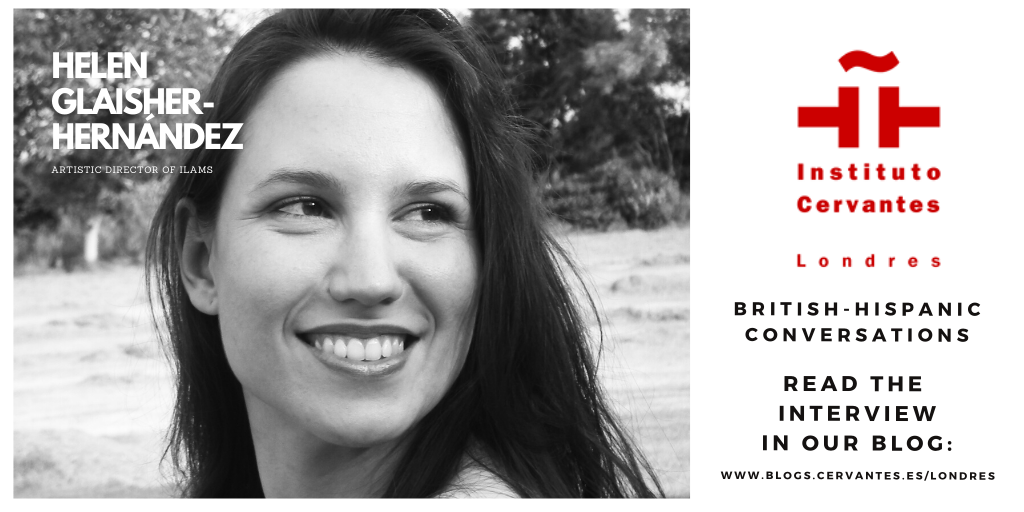
This week, we continue a series of interviews with personalities from the Spanish-British sphere. Our eighth guest, Helen Glaisher-Hernández, pianist, Latin Classical music expert and artistic director of the Iberian & Latin American Music Society (ILAMS).
For the past four years, ILAMS and Instituto Cervantes London have co-produced the ECHOES Festival of Latin Classical Music, taking place across some of the capital’s most prestigious classical music venues, such as St Martin-in-the-Fields, the Royal Academy of Music and St James’s Piccadilly.
Following two degrees in Spanish and French at the University of Cambridge (Corpus Christi College), including a year abroad studying Piano at the Conservatorio Nacional Superior in Buenos Aires, Argentina, and an MMus in Piano at Trinity College of Music in London, Glaisher-Hernández now combines her two great loves – music and hispanicity – as a concert pianist, event producer and educator specialising in Luso-Hispanic repertoire.
You often say that your two great loves are music and hispanicity. How do you combine both in your life?
Well, I was born in the UK, in Sheffield, but am also half-Spanish by virtue of my Canarian mother, who is a tinerfeña. As a child, I was quite wilful and typically replied in English whenever my mother spoke to me in Spanish. I understood her perfectly well, though, because she had persevered in speaking her mother tongue to me regardless ever since I was born. (Now my Spanish is near-native, and I feel very grateful that she did!) I perfected my Spanish at secondary school and since this was my absolute favourite A-Level subject, I then opted to read Spanish (and French) at university.
Having also studied piano from the age of four, and achieving an advanced level in my teens, it occurred to me that I could use the requisite ‘Year Abroad’ of my Languages degree to further my playing by studying piano in a Hispanic country. I’d been to Spain so many times by that point, and having never left Europe, South America beckoned to me in a much more enticing way. After investigating the options, I discovered that Argentina housed one of the best musical institutions on the continent, the Conservatorio Nacional Superior ‘López Buchardo’ in Buenos Aires, and the Dean there kindly agreed to let me enrol on the first year of their undergraduate Music degree. My experience there was life-changing and proved decisive in setting me on a career path in music – something I’d never seriously considered until then.
When I returned to England I made plans to audition for music college here after my graduation from university, and was accepted at Trinity College of Music (as it was then known); I wanted to study with a particular tutor there, the Venezuelan pianist, Elena Riu. From the off I played a lot of Luso/Hispanic music with a view to specialising in that repertoire professionally.
…And ten years later that’s essentially what I’m still doing. Of course, I play all sorts of composers (I’m not a Latin ‘fetishist’, as some people seem to think) but with my particular background, and after so many years of studying Hispanic ‘letters’ (including Hispanic literature, film, theatre and visual arts) at university, it gives me a lot of satisfaction to bring my cultural knowledge and experience to performing and promoting this wonderful but highly-neglected music; music which I sincerely believe can count itself amongst the finest ever written anywhere. In fact, I would argue that no non-native musician can authoritatively tackle this repertoire without having enjoyed a considerable level of immersion in the vast, diverse and extremely rich culture that is Hispanic culture. And I would cite cultural understanding (or a lack of it) as the main challenge facing international promoters of Latin classical music today.
Since graduating from Trinity, I feel privileged to have performed at some of the UK’s most prestigious venues, and to have been able to collaborate with some truly great artists from the Latin classical music field. At the moment I’m working on the release of my first album, which explores the globalisation of the tango through its operatic roots. The recording also features the Argentine tenor, Leonardo Pastore, soprano, Jaquelina Livieri, and mezzo-soprano, Florencia Machado – all leading opera singers in Argentina, alongside various instrumentalists from the Buenos Aires Philharmonic. Don’t ask me exactly when it’s coming out, because the Coronavirus pandemic has thrown uncertainty on all our plans, but watch this space!
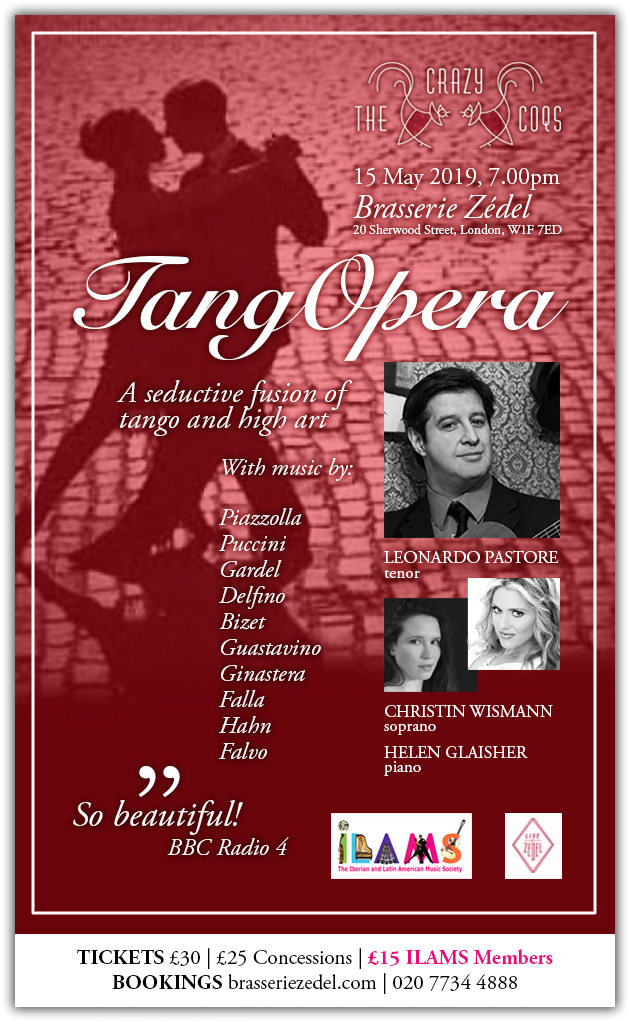
Since you have a degree in Spanish and French from Cambridge University, did languages open doors to you?
So (without wishing to brag!), I actually have two degrees from Cambridge: an MA in ‘Modern and Medieval Languages’ and an MPhil in ‘European Literature’, which I decided to ‘tag on’ to my first degree before switching to Music. I did this for the entirely flippant reason that all my friends were doing it, and I thought it would be ‘fun’ to continue to maintain some sort of academic activity whilst I took a year to prepare for Music auditions. Of course, as it turned out, the MPhil was very intense and necessarily absorbed most of my time and headspace, and I ended up delaying my musical plans for another year. My MPhil, however, unexpectedly turned out to be one of the best things I’ve ever done. After four years of achieving only average-to-good marks as an undergraduate, I seemed to blossom as a postgraduate, to the extent that the Faculty subsequently offered me funding to stay on for PhD. …But I’d been too seduced by music by that point to abandon my plans. Nonetheless, I now see that year as an essential part of my education, and I particularly enjoyed working on areas such as Argentine film and the plays of Lope de Vega, whilst for my dissertation I explored the Canarian cross-currents present in Shakespeare’s The Tempest. During this year I also studied a considerable amount of Postcolonial Theory, which continues to colour my understanding of the world, and its music, to this day.
As for the opening of doors, I never really contemplated pursuing a career in Languages in the literal sense – the idea of becoming an interpreter, for example, never appealed to me, although I think it almost goes without saying that having Languages can only improve one’s career prospects in any sector. For me, the importance of Languages is not so much utilitarian as humanistic – and increasingly so in these troubled times in which we live. We Brits are infamous throughout the world for our relative reluctance to learn languages, our misplaced indolence predicated on the convenient reality that the rest of the world is more than adept at speaking ours. But instead of bringing increased peace and enlightenment, the new digital century has delivered an overwhelming intensification of globalisation that we are struggling to assimilate, and which has instead only led to culture wars, the hardening of politics and the polarisation of societies worldwide.
The mainstream media have driven public discourse into a narrow dialectic by overwhelmingly tackling these problems as political ones, but in my opinion our problems are fundamentally cultural; the result of a naive and incoherent identity politics (on all sides) spouted by people unversed in any kind of nuanced cultural thinking. A consensus of the population seem to view investment in the cultural industries as a merely optional adjunct to the ‘utilities’ of the economy, but as Winston Churchill eloquently warned us, “Ill fares the race which fails to salute the arts with the reverence and delight which are their due.” I believe that culture is the answer to all our social and political problems. In order to solve the challenges of globalism we must do better at understanding each other – the survival of the planet and our species depend on it. I consider language to be the keystone of any culture, and so in that sense, we must all learn languages. …And by the way, music is also a kind of language!
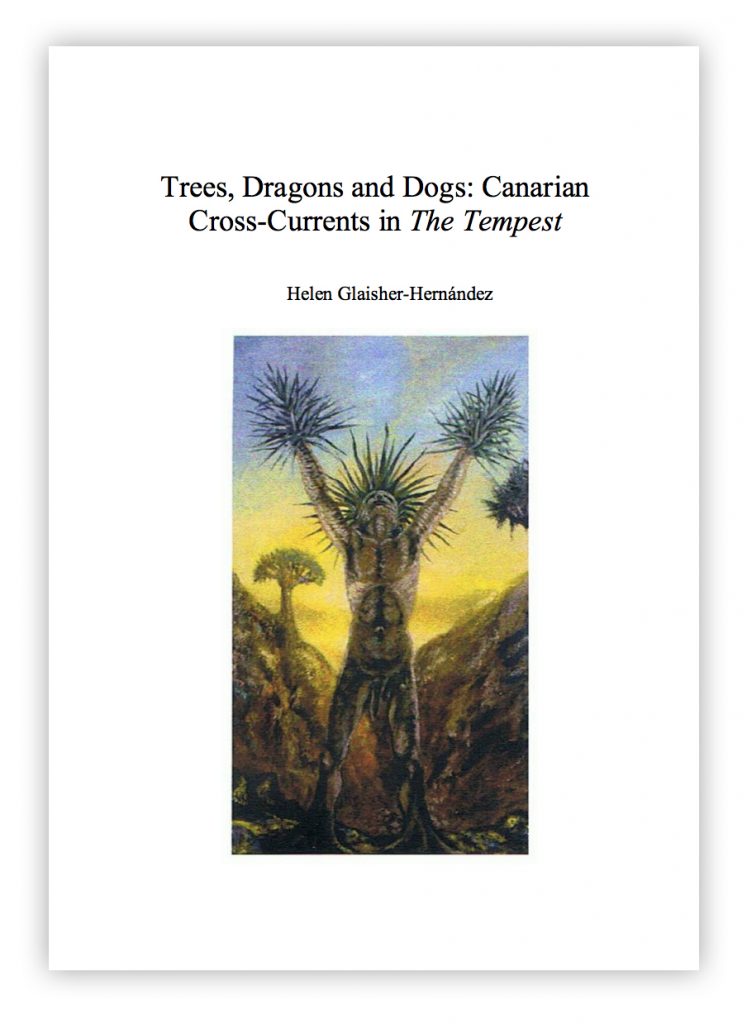
Your year abroad studying piano at the Conservatorio Nacional Superior in Buenos Aires, how was it?
If I tell you that I really didn’t want to come back at the end of the year, that might give you some sense of how devastatingly incredible it was. I went out there with consciously low expectations, never dreaming that I would literally have the time of my life. I’ve been back to Argentina many times since then, so it seems like a second home now, but I still remember how it felt that first time, and it makes me a little nostalgic to think about it. It was a very special experience that had a profound and lasting effect on my life in many ways.
I think the first time you leave Europe – as a European, I mean – it’s always something of an experience, like landing on a different planet. Argentina is a place where crazy things happen to you. Having said that, I soon felt like I strangely belonged there. Argentinian people are incredible characters, and I was quickly seduced onto their wavelength. To an extent, Argentines have a reputation for being corrupt and duplicitous, but that wasn’t my experience at all, at least not in my personal relationships. On the contrary, I think Argentines are quite simply the best people on the planet – the most generous, witty, intellectual and genuine you’ll ever encounter. Everything runs deep. When they say something, they mean it, and they’re all philosophers, down to the taxi drivers and the person checking out your shopping at the supermarket. They blew my mind constantly; every conversation was a revelation. Once they befriend you, the bond is permanent. I still have a lot of the same friends I made there 17 years ago, and they’re some of the best friends I ever had.
The city, by extension, and despite its size, is also warm and welcoming – it embraces you as you walk down the street. I lived in a student residence with Argentinians from all corners of the country who had also come to study in the capital, as well as a few Brazilians. Supposedly, the building – a traditional 19th-centuy house in the Barrio Norte district – had originally been a brothel, and it was definitely haunted – I had some unusual experiences there! There was never a dull moment.
At the time of my arrival in 2002, Argentina had just been plunged into an economic crisis and the peso had lost more than two thirds of its value overnight. Argentinians suffered terribly, but for me this was effectively like winning the lottery. It meant that me and my pounds sterling could jet-set around the country taking 5-star mini-breaks, and eat out every day of the week. I didn’t have a care in the world. It was nice to temporarily feel the liberating effects of relative wealth, although thinking about it now, it does seem a little decadent given what was going on around me.
Studying at a conservatoire for the very first time was also an awe-inspiring experience. …Bearing in mind that I was probably the first Briton to ever study there in the history of the institution. My fellow students couldn’t quite understand why on earth I would leave England to go there. I was something of a curiosity, and all the students knew who I was and wanted to be my friend. (It’s my conclusion that Argentines have a profound admiration for the British. Although they often pretend to hate us, I think they’d secretly like to be us.) I had a wonderful piano teacher, Graciela Beretervide (a former student of Arrau), with whom I studied Handel, Beethoven, Chopin and Rachmaninov. She was like a mother to me, and we still keep in touch. I also attended all the first-year modules in subjects such as Critical Theory, Musical Forms, Gregorian Chant, Alexander Technique, and so on. Studying classical Music History from the point of view of the third world, for example, was very eye-opening. The best part was that, not being a permanent student, I didn’t have to actually sit any of the exams, so I just dedicated myself to taking it all in and having a great time! By night I went out to all sorts of concerts with my friends.
It was a beautiful time. I walked around in a constant state of euphoria, with a permanent smile on my face. But it was ultimately an artificial situation which inevitably had to end. Coming back to England to do my finals was, by comparison, pretty depressing. But as Eladia Blázquez said in her famous tango, ‘siempe se vuelve a Buenos Aires’. (‘You always go back to Buenos Aires’.) And so I have, several times, and I’m sure I wild find myself there again…
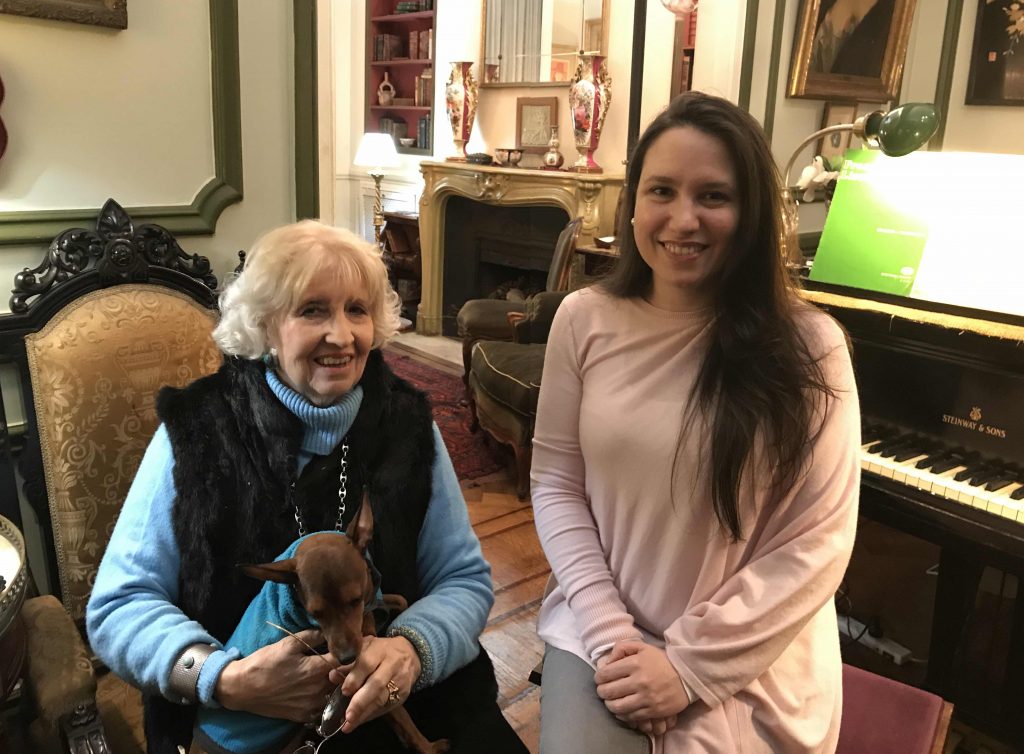
How did you start to appreciate the music of different cultures and traditions from an early age?
Mainly because my father was British and my mother is Spanish, and they each tended to listen to very different things. My mother liked to have Canarian folk music on in the background, and other types of Hispanic music – Mocedades, Julio Iglesias, Rocío Jurado…as well as Latin American artists such as Mercedes Sosa, Los Panchos and Los Paraguayos.
My father, being of a slightly older generation to my mother, played a lot of music from the 1940s onwards – Glen Miller and big-band swing music, George Formby, crooners like Bing Crosby, Hollywood musicals… He also liked the pop music of the 60s and 70s. In his record collection he had Shirley Bassey, The Carpenters, Burt Bacharach, ABBA, The Bee Gees, Neil Diamond, Neil Sedaka… My father was a businessman by trade, but used to organise concerts for the Variety Club to raise money for charity – he put on huge events around Yorkshire with artists such as Matt Monroe and The Nolan Sisters.
Neither of my parents ever had any kind of musical training, although they were (are) naturally very musical and respectively very decent singers (they were always singing around the house) – I always thought both of them could have been professionals. I think the point at which they intersected musically was Nat King Cole’s En español – an album which now reminds me of them and makes me very sentimental.
In terms of classical music, I was exposed to a lot of the standard orchestral repertoire at the local youth orchestra as a teenager where I played violin, alongside things I heard on Classic FM. During my Sixth Form I also did an ALCM diploma and studied a lot of the ‘Great’ composers.
My elder brother, Mik, was a professional musician, however – he was the drummer in a successful Sheffield band of the 80s and 90s called the Comsat Angels. They had some brilliant songs, the most famous probably ‘Independence Day’. When I was a teenager, Mik would ‘corrupt’ my listening habits by making me mixtapes of the Beatles, and various rock and grunge bands I’d never heard of, like Juliana Hatfield. Obviously at that time my own interests came from what was in the Top 40, i.e. Brit Pop – Pulp (also a Sheffield band) and Radiohead probably the most. Plus any number of pop artists from that time; my biggest guilty secret being Bon Jovi. (Still is.)
As a teenager I also had musical escapades in Spain each summer when my parents would send me off to Tenerife to spend the holidays at my grandparents’ house. My aunties used to take me out clubbing with their friends and we danced to a lot of salsa. A lot of the Latin pop they played on the radio also rubbed off on me. Mónica Naranjo, Juanes, Alejandro Sanz…
You could say that my musical tastes have become very eclectic, but I only really divide music into two types: good and bad. But I like to keep an open mind and am always listening to new things. I would say music is my addiction.
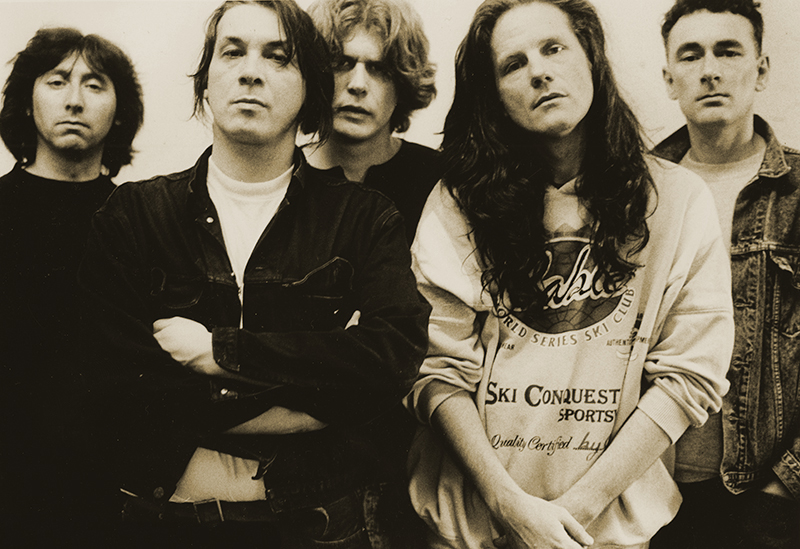
You have a special passion for chamber music and vocal accompaniment. How did you become interested?
I first ‘discovered’ the beautiful thing that is chamber music at the conservatoire in Argentina. We had a weekly chamber music class in which we all had to form small ensembles and perform in front of each other. There was also a strong feeling of solidarity within the class which helped to convert me. As a pianist, the concept of playing with other people was entirely new to me. The life of a pianist is a relatively solitary one, and you really need a certain ego and temperament to want to perform publicly as a soloist – a temperament I don’t really possess. I find the experience a bit like navel-gazing in public, whereas when you collaborate with others it’s a more sociable and humbling experience. …Plus you get the benefit of seeing things from different perspectives.
I didn’t really get into vocal accompaniment until I got to Trinity, when I was approached by a soprano who was into some of the same things that I was. I’d never really had any particular interest in vocal music before then – you would have literally had to drag me by the hair to see an opera. But the more I got into it, the more I began to appreciate the marvel that is the human voice and the incredible technical feats that classical singers perform. I’ve come to agree with Avro Part, who famously said that ‘the human voice is the most perfect instrument of all’. At first I didn’t quite know how to listen discerningly to a singer (most people don’t); it was something I’ve learnt to do gradually, and I’m still learning. Now I envy singers – I really wish I could do what they do. Perhaps in my next life I’ll come back as a singer…As for this one, I’m quite content to enjoy it vicariously through the various singers I work with, and I’ve been lucky to play with some really great ones.

You have performed live at major London venues, including the Southbank Centre’s Purcell Room at Queen Elizabeth Hall, Barbican’s Milton Court Concert Hall, St John’s Smith Square, St Martin-in-the-Fields. Which one is the most special for you?
All of these venues are special in their own way and I love them all, but I would actually cite one you didn’t mention: the National Gallery in London. In 2015, I curated a concert titled Music in the Time of Goya in tandem with the blockbuster exhibition, Goya: the Portraits. In addition to being able to work with the acclaimed flamenco dancer, Nina Corti, who provided some bespoke choreographies to accompany the pieces, it was quite magical to be able to play 18th-century music at the Gallery’s illustrious Barry Rooms, surrounded by masterpieces from the same period, where Myra Hess also used to present her historic lunchtime wartime concerts. It’s a beautiful thing when art forms can converge and combine to work in synergy with the surrounding space. It also makes for a more ‘total’ experience for the audience. The project has its own website where you can view video clips and images from the performance, as well as images of some of the Goya paintings featured in the exhibition: musicinthetimeofgoya.com

You also work as Artistic Director of ILAMS in promoting Iberian classical music in the UK. What events do you curate? How did you become involved?
To answer your second question first: I started volunteering for ILAMS whilst I was still a student at Trinity. I came across the Society whilst promoting a concert I was organising, and asked the committee if they would advertise the event to their members. A few representatives from the Society came along to my concert, and on seeing that I had a pretty good turn-out I guess they thought I could be of some use to the organisation. I joined the committee in 2006, and when in 2008 the then Chairman left ILAMS, I was voted in as his successor.
Since then, the Society has developed considerably in many ways, although it remains a modest, grass-roots organisation. Our activities are now basically divided into three strands: our monthly lunchtime concert series at St Martin-in-the-Fields and St James’s Piccadilly; our bi-monthly classical guitar series, Guitarrísimo, and our annual Echoes Festival.
The complete ILAMS programme archive is viewable on the Society website, and there is also a highlights page. Personal favourites for me include presenting artists and ensembles such as Celso Machado, Leo Brouwer, John Williams, Bárbara Llanes, Onix, Marcelo Bratke, Jesús León, Coro Cervantes, Cecilia Rodrigo, Thibaut García, Douglas Riva, Moreno Gistaín Duo, Aquarelle Guitar Quartet, Lena Semenova, Jacquelina Livieri, Alvaro Pierri and the Mela Guitar Quartet, amongst many others.
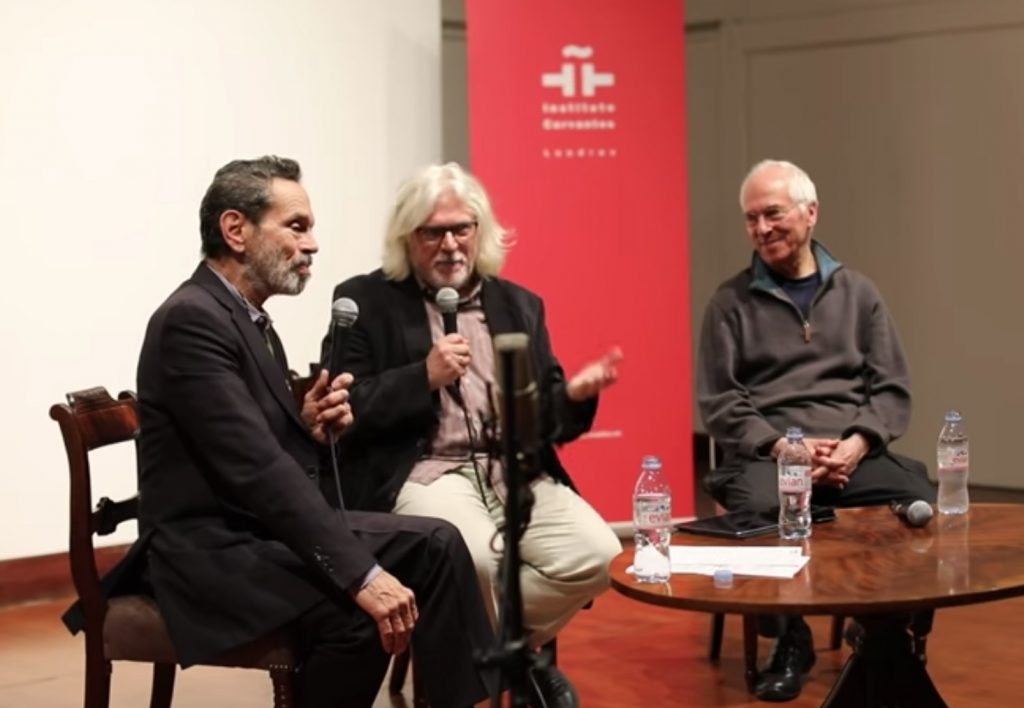
You also organise Echoes Festival every year. How did it start? Can you share some great moments from these years with us?
Echoes Festival was born out of a mounting practical necessity to consolidate the limited human and financial resources of the Society, since we were previously spreading ourselves across the year with a more ad hoc programme of events which were quite disparate. We also wanted a way of focusing public attention on our activities in a more concentrated and singular way, which was facilitated by putting together all of our evening events under one umbrella. Futhermore, in 2016, the year we launched the Festival, there wasn’t (and still isn’t) an annual Festival of Latin classical music in the UK, so it seemed obvious to go in this direction.
All of the programmes from the last four editions of the Festival are available to view on the Festival website. It’s difficult for me to single out any favourite concerts because we have made a concerted effort from the start to programme artists of only the highest calibre, and even within that remit I have often been surprised at the high level we have witnessed. Of course, we’re proud to have featured more widely-known artists from the Iberican classical music circuit, such as the Quiroga Quartet, the Assad Brothers, Odaline de la Martínez and La Grande Chapelle. But some of our younger or lesser-known artists have often been equally beguiling, such as Dichos Diabolos, and the Lacock Scholars. For me, it’s also so valuable to be able to hear some of the best native specialists presenting their national repertoire – such as Venezuelan pianist, Clara Rodríguez, performing the music of her compatriot Antonio Estévez, or Alessandro Santoro performing pieces by his father, Claudio Santoro, that he grew up hearing around the house. Other events have stood out for me because of the holistic experience of hearing music in more quirky and edgy venues: pianist Carla Ruaro performing Amazonian music in the dark depths of the Brunel Tunnel, the concrete floor strewn with leaves; guitarist Darío Barozzi at the historic Cinema Museum, where Charlie Chaplin grew up.
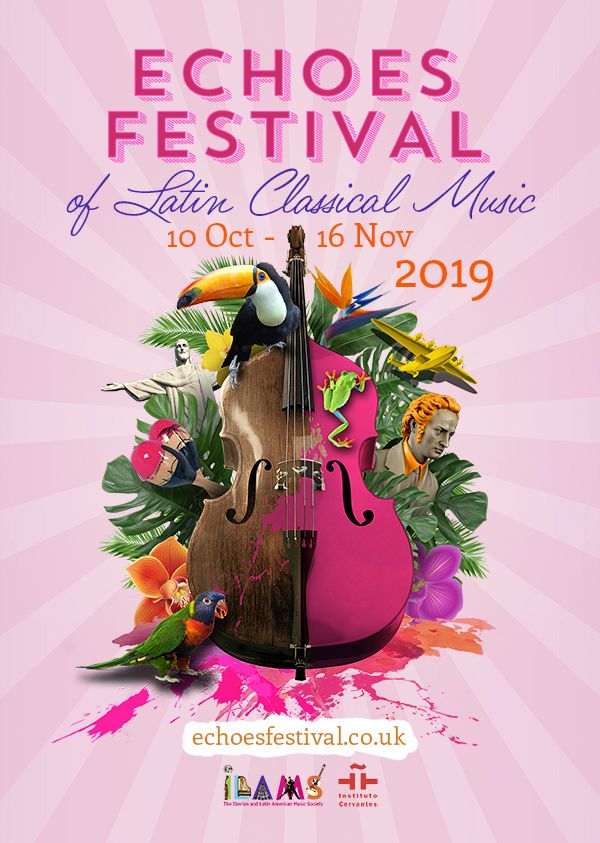
From your experience working with ILAMS and ECHOES, do you think the interest in Iberian classical music among the British public has increased?
I’d like to think that with all the energy that ILAMS has put into our work since 1997, when the Society was founded, we have obviously had a positive impact on the reception of this music. We certainly have a much larger mailing list now than when we started, and our public has grown considerably, with capacity audiences becoming more commonplace at our events. But in broader terms, the wider impact of these things is difficult to quantify. Overall, I think animosity towards this music continues to persist amongst British audiences to the extent that we are still nowhere close to achieving parity of reception with standard European repertoire, and there is therefore still a lot of work left to do.
My sense is that it still takes the really heavy guns to make a systemic difference to the landscape: it requires the superstars of classical music – the Placido Domingos and Gustavo Dudamels of the industry – to present music at major venues and to be featured in the mainsteam classical media to really create significant shifts in public tastes; sadly, the music seems unable to do this purely on its own merits. But I think it’s understandable to a point – it’s human nature to eschew the unknown (and I’m as guilty as most people in this respect). What is always encouraging, however, is that in cases where audiences have been convinced to attend an event, their response to the music is overwhelmingly positive; certainly when ILAMS presents unfamiliar music it invariably goes down very well. Once people are exposed to this repertoire they tend to like it, so the music itself is not the problem; the challenge lies in convincing people to go and hear something they’re unfamiliar with in the first place – especially if they have to part with their hard-earned cash to do so.
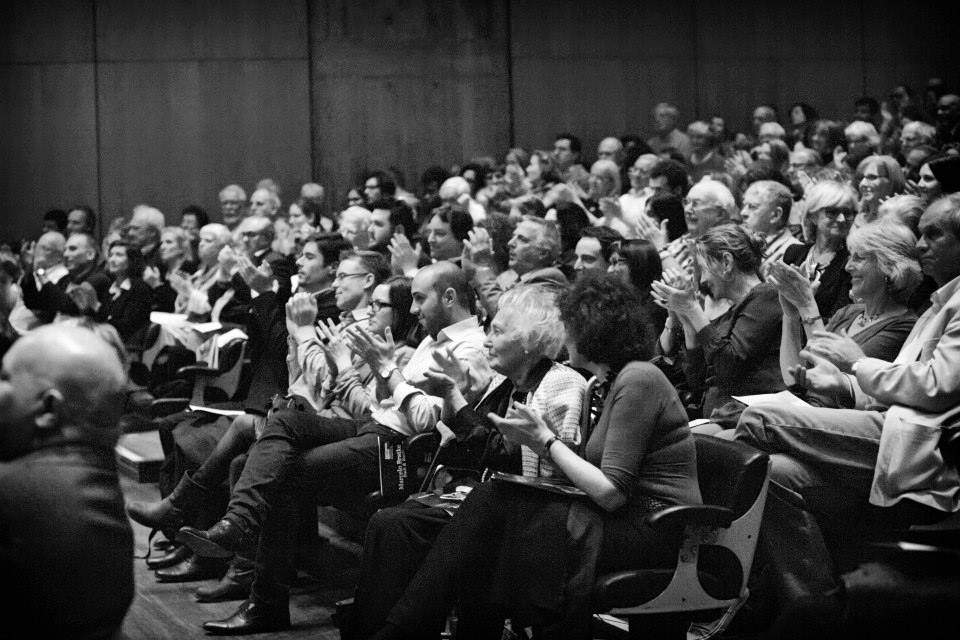
«I cannot stress enough how important modern languages research is today»

This week, we continue a series of interviews with personalities from the Spanish-British sphere. Our seventh guest, Catherine Davies, is Director of the Institute of Modern Languages Research (IMLR) since 2014. Davies was also Professor of Hispanic and Latin American Studies at the University of Nottingham (since 2004), where she was Head of the School of Modern Languages and Cultures.
After gaining her PhD (Glasgow) in 1984, Davies taught and researched at the universities of Manchester, Queen Mary and St Andrews. Davies has held several research grants funded by the Arts and Humanities Research Council, the British Academy and the Leverhulme Trust.
Her research expertise is in the culture, history and literature of Spain and Spanish America in the 19th and 20th centuries, with a particular focus on Galicia (Spain), Cuba and Argentina. Her publications examine the construction of gender identities and the roles of women in the Spanish American Wars of Independence from Spain (1810s-1820s).
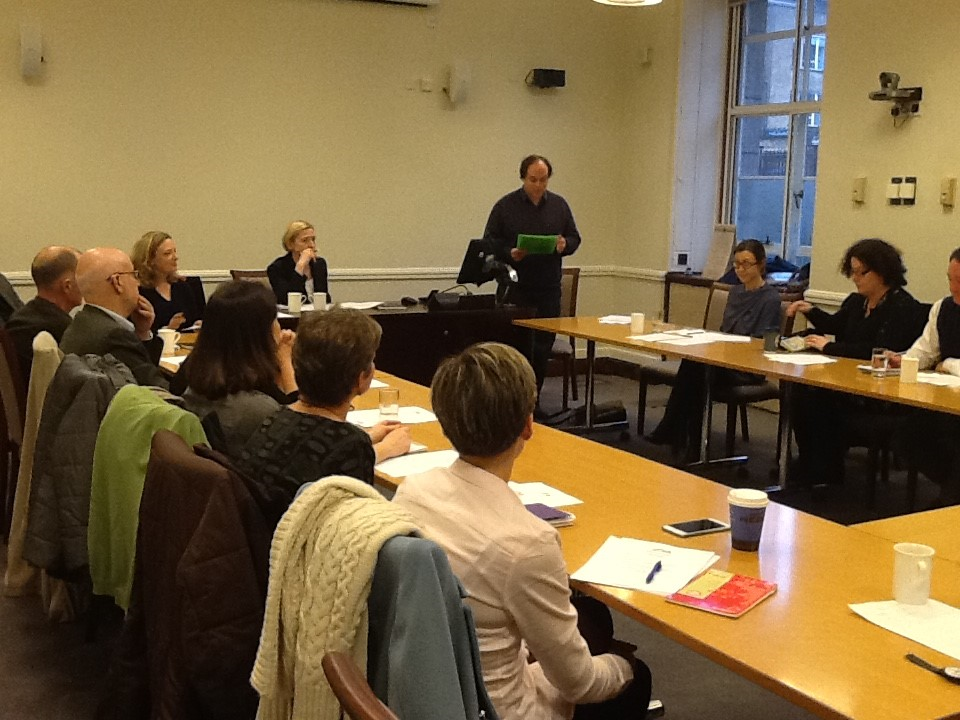
– You have been the Institute of Modern Languages Research (IMLR) director since August 2014, how have these years been? What do you value the most from this experience?
The IMLR is funded by the government and the University of London to support research in Modern Languages across the UK. The aim is to create a space for academic discussion around research, rather than teaching or administration, to lead on new initiatives, and to collaborate as much as possible with non-academic partners to establish strong networks and facilitate public engagement around ML research. Looking back, my job as Director has been mainly working with people from many different backgrounds, including university colleagues, to create sustainable partnerships with definite research outcomes, which I hope have benefited the ML community in general. I loved every minute of it, and I’ll miss meeting so many interesting people and getting involved in many different types of organisations. The experience really opened my eyes to the significance of language expertise across all sectors of society.
– IMLR and Instituto Cervantes London are long standing partners, how do you describe the relationship between both institutions?
We work together very closely, especially since Ignacio Peyró took up his post. My own research is in what I still refer to as ‘Hispanic Studies’, so I personally have always valued highly the Cervantes, both in London and in the 1990s in Manchester. When I was Head of the Spanish and Portuguese Department in Manchester University we arranged for the Cervantes to teach some of our language classes. At the IMLR the relationship is all to do with collaboration in research and outreach. If, for example, the Cervantes is hosting a visiting speaker, the IMLR can organise a research workshop with the speaker on a theme of interest to the UK research community and provide the catering and publicity. Or the IMLR might take an idea to the Cervantes and together we make it happen. We each have our own networks, contacts and influences and join forces whenever we can. The IMLR has a similar relationship with the Goethe, French and Italian Cultural Institutes, and several Embassies.
– How could you describe the importance of modern languages research in a multilingual and globalised world?
I cannot stress enough how important modern languages research is today. Language expertise is vital for international understanding and cross-cultural exchange. Research in the written and visual cultures of non-Anglophone societies, which is where most Modern Language researchers focus their attention, is increasingly urgent. For example, how have the different countries and cultural communities reacted to the Covid-19 crisis? How can we possibly understand this without expertise in languages and cultural sensitivities? Modern Languages research has always been strong in the UK but the discipline is facing difficulties in university recruitment. Entrants to study Modern Languages degrees have steadily decreased since the mid-2000s, especially in German and French, and many Modern Languages units have closed over the last decade. This is not good news for the UK, now facing Brexit and the need for international trade deals, not to mention fighting a global pandemic and finding a new role in the global economy.
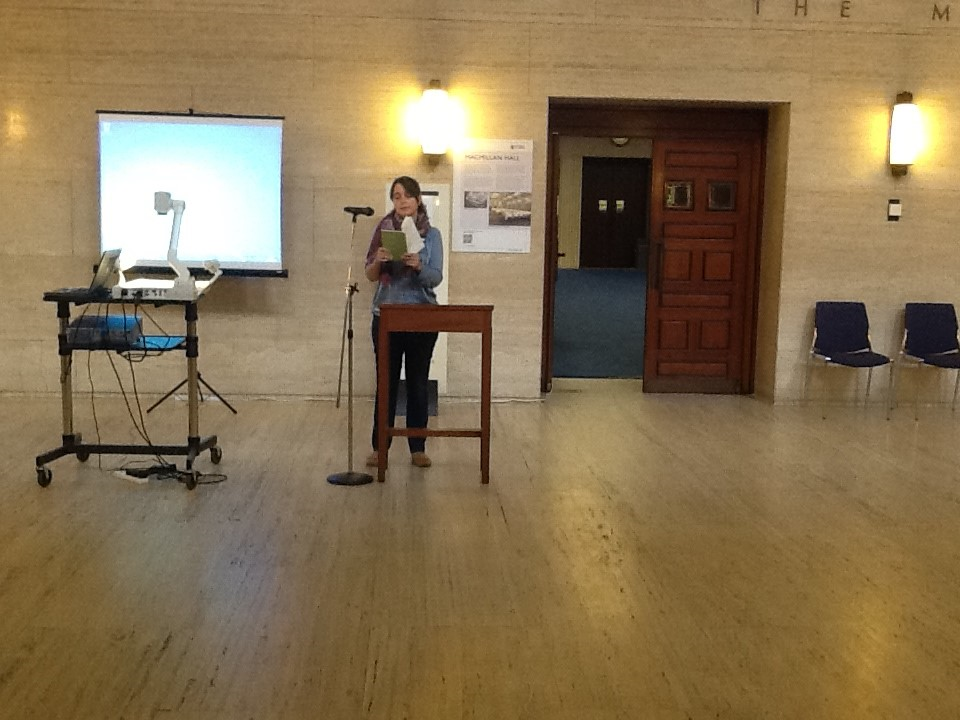
– Since you gained your PhD at the University of Glasgow in 1984, you have taught at the universities of St Andrews, Manchester and Queen Mary, among others. Do you see a bigger interest in learning languages?
If you take the long-view, I would say there is as much interest in learning languages in UK Higher Education as ever, but students are tending to take degrees in other subjects, such as Science or Law, and to study a language in the University Language Centres (what we call University Wide Provision). They may not reach the same level of expertise as those who take languages degrees, but they often come back to the language later in life. The number of university students taking languages in the 1980s and 1990s was relatively small, especially in Spanish, much smaller than today, and they tended to study French and German with Spanish, Portuguese, Italian and Russian as minor subjects. Then there was a steady increase in the late 1990s and early 2000s (during the Labour government and university expansion), and a gradual shift from French and German to Spanish and Chinese. I remember when I was Head of the School of Modern Languages and Cultures at the University of Nottingham, recruitment was not an issue until the around 2012. In fact, the concern was that we didn’t have sufficient staff to teach the numbers of students taking Spanish and Portuguese.
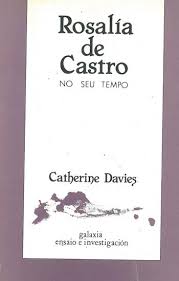
– Your research interests include gender and nationalism in Cuba and Spain, particularly the formation and transmission of liberal thought in 19th-century Spanish and Spanish American literature and cultural history. How did you become interested in this topic?
My research on gender, politics and nationalism began with my PhD, at the University of Glasgow, on the Galician author Rosalía de Castro. This was the subject of my first book, published by Galaxia in Galician in 1987. I sent my thesis to Ramón Piñeiro through the post (no digital files in those days) and a box of books arrived three years later. I never found out who the translators were, and it has never been published in English. At the time, it was generally assumed that Rosalía de Castro was a big name in Cuba, but when I went to Cuba to research this further, I realised this wasn’t the case. She may have been important in the nineteenth century among the Galician migrants, but in Castro’s Cuba she was virtually forgotten. I published a book on Cuban women writers, and an edition of the 1846 abolitionist novel, Sab, written by the Cuban/Spanish author, Gertrudis Gómez de Avellaneda. This led to an interest in the work of Spanish abolitionist, Rafael María Labra, who was born in Havana but whose family were Asturian. His father was in the Spanish army and governor of Cienfuegos; there is still a gleaming white statue of the father, Ramón, in the central square today.
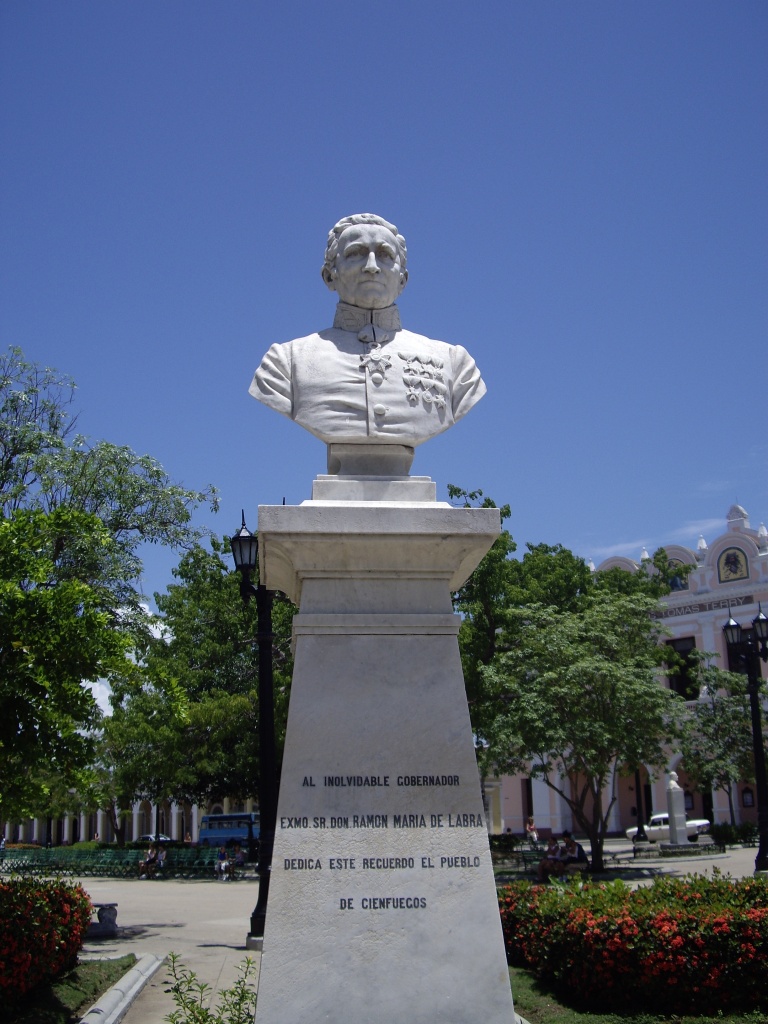
– You also wrote a number of books including on abolitionism in Cuba and co-wrote South American Independence: Gender, Politics, Text. What are you currently working on?
I have always been interested in the published writings of women in nineteenth-century Spain and Spanish America. I find it is impossible to come to grips with these texts without fully understanding the social and political circumstances of the times. The earliest women’s writings in nineteenth-century Spanish America are by women who were inevitably caught up in the Wars of Independence from Spain, between 1810 and 1830 more or less. I led a research project on this subject and we created a map-based database of hundreds of women involved in the wars hosted by the University of Nottingham: https://www.nottingham.ac.uk/genderlatam
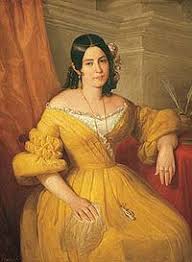
My own research for the co-authored book you refer to focused on the writings of the Colombian Josefa de Acevedo and Argentine, Juan de Manso. The 1820s was a pivotal decade in Spanish America, everything changed. I’m now working on the travelogues written by British travellers to the River Plate in the 1820s, texts written in English but translated into Spanish and published in Argentina in the 1920s. The books written by the ‘viajeros ingleses’ are very well known in Argentina but almost forgotten in the UK. Although written by sea captains, army officers and company agents they are beautifully crafted literary texts but are only used now and then by British historians seeking factual data.
Luke Stegemann: “En España descubrí una Europa que me habían ocultado”

Hijo de cura anglicano y criado en el corazón rural de Nueva Gales del Sur, el australiano Luke Stegemann descubrió España por sorpresa en los años 80. Enamorado del país, no tuvo más remedio que volver a vivir en él, y desde entonces compagina temporadas en Australia y temporadas en España. Con una larga carrera como profesor, traductor y periodista -The Adelaide Review, The Melbourne Review-, y popular en las redes por su afecto a todo lo español, Stegemann ha escrito dos libros de tema completa o parcialmente español: The beautiful obscure (Transmission Press, 2017) y Amnesia road: landscape, violence and memory (NewSouth Publishing, febrero 2021).
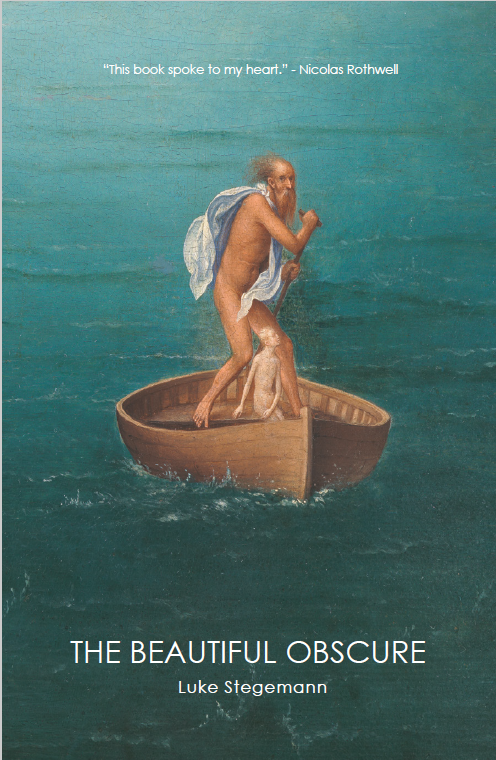
-En The Beautiful Obscure se unen su condición de australiano que descubre España y la reflexión sobre los encuentros y lejanías entre ambos países en la Historia. ¿Qué atrae a un australiano, allá por los 80, a lo español?
Tuvo algo de fortuito. Viajaba por Europa tras terminar mi primera carrera y no había planeado pasar más de unos días. Sin embargo, una vez en España, sentí una atracción inmediata, a diferencia de lo que sentía, por ejemplo, en Grecia, Italia, Francia o Alemania. Los dos o tres días que había planificado pasar allí se convirtieron en un mes a medida que viajaba cada vez más por el país. Estamos hablando de 1984, y de una España que en muchos aspectos ha desaparecido por completo. La sensación más evidente fue la de descubrir una Europa de la que nunca me habían hablado. Era como si una sección entera del continente, cuya historia creía haber estudiado, hubiera estado oculta.
Así que la atracción era hacia lo desconocido, pero no era tan simple como la experiencia clásica de «orientalización» de «lo exótico». De inmediato quedó claro que esto era parte de mi propio patrimonio cultural, parte de la historia del continente de mis antepasados. Inmediatamente pensé: «¿Cómo no supe esto?» y luego, «¿Cómo puedo vivir aquí?» Cuando regresé a Australia y expliqué mi plan para vivir en España lo antes posible, mi familia y amigos no daban crédito. España aún no se había unido a la UE y estaba discutiendo su entrada en la OTAN. Dos años después, ya estaba en España como profesor de inglés.
Una cosa importante para mí es enfatizar que al ser australiano, a diferencia de británico o norteamericano, creo que aporto una perspectiva diferente sobre la historia y la cultura española. Vengo del «sur», del Pacífico y de una colonia europea: todo esto influye en mi manera de entender España y su lugar en el mundo. Ninguna parte de Australia fue colonizada por España (aunque podría haberlo sido), ni Australia ha tenido ningún conflicto con España. En ese sentido, no tenemos «historial», ni «equipaje» como países asociados. La gente a menudo habla de la similitud (hasta cierto punto, no debería ser exagerada) de carácter entre australianos y españoles, de gente muy amistosa y, debo decir, una reputación de tener una actitud desafiante ante la autoridad, que es principalmente una fachada y no una realidad. Ciertamente, existe la determinación en ambos países de disfrutar la vida y llenarla con el mayor placer posible, aunque los australianos son más conservadores socialmente.
-Durante siglos, la relación de España con Australia parece haber sido la historia de una frustración: ni los barcos de la aventura imperial ni los de las expediciones científicas encontrarían acomodo permanente en sus costas. A la vez, ese también parece ser el caso de Australia con España: inevitable pensar en ese verso de Ted Hughes a Sylvia Plath, en el que le dice que en su escuela nunca le hablaron de España…
En Australia, España siempre ha sido descuidada como tema de estudio. Esto se debió durante muchos años a la imitación australiana de la educación británica con todos sus prejuicios culturales y geopolíticos. En las últimas cuatro décadas nos hemos alejado de la órbita imperial británica y Australia se ha posicionado conscientemente como una potencia regional de Asia. Para ser un país «anglófono», hay un nivel muy alto de «alfabetización de Asia» en Australia. Dicho esto, salimos del paraguas británico para convertirnos en un aliado fiel y algo servil de EEUU, cuya cultura ha llegado a abrumar a la nuestra.
España es un destino turístico popular, aunque me desespera la cantidad de australianos que creen que visitar Barcelona y San Sebastián constituye «visitar España». Muy pocos aprovechan la oportunidad para explorar aquellas regiones que para mí son lo más destacado: Madrid; los pueblos de Zamora, Soria y Segovia; el Maestrazgo, las colinas de Jaén, la Tierra de Campos, sin olvidar los caminos de Toledo y Ciudad Real, a través del territorio del Quijote …
Madrid es un caso interesante en este punto. Siempre me han fascinado aquellos extranjeros a los que no les gusta. Para mí, Madrid es una concentración de tantas líneas de influencia histórica, cultural y política que es indispensable como punto de referencia. Por eso he tratado de comparar en mi libro momentos de la historia de Madrid con Australia. Ahí están los navegantes que, en época de Felipe III, reclaman atención para esa tierra, sin que les hagan caso. O cómo Carlos III muere en 1788, justo cuando los británicos fundaban lo que hoy es Sidney. Para mí, estas no son simplemente coincidencias; son líneas paralelas que fluyen a través de la historia, que no necesariamente se tocan en ningún punto, pero que de alguna manera influyen entre sí. Es por eso que sentí que las historias entrelazadas de Australia y España eran una gran historia no contada.
El poema de Ted Hughes que cita usted es un ejemplo clásico de esa interpretación de España a mediados del siglo XX desde el Atlántico Norte. Una España en blanco y negro, de clichés de la época franquista y esencialismo orientalista, que ha envejecido mucho. Esto, si me lo permiten, es la opinión de España que muchos australianos no tienen, porque no tenemos esos siglos de comparación cultural (y, a veces, de condescendencia). En The beautiful obscure no he mencionado el fútbol o las corridas de toros y muy pocas menciones al flamenco. Esto no se debe a que no aprecio y disfruto la singularidad cultural de cómo se realizan estas cosas en España, sino a que quería escribir un libro que evitara los comentarios habituales de las publicaciones.
Por cierto, y a propósito de la cuestión de la leyenda negra: al tratar de evitar los clichés anteriores, es innegable, al menos en mis lecturas culturales y políticas, apreciar un cierto tono despectivo hacia España que creo que atraviesa mucho pensamiento anglófono. Pero decirlo es invitar a la controversia. Uno puede creer que España fue maltratada por quienes la siguieron y que escribieron sus propias versiones de la historia como los «vencedores culturales», cuya influencia se extiende tanto en nuestro mundo contemporáneo. Uno puede apreciar esto y lo entiendo, sin caer en las teorías de la conspiración franquista de que un complot masónico y comunista en todo el mundo estaba tratando de destruir España. Pero he visto, con los recientes debates en torno a Roca Barea, que marcar la leyenda negra como algo real, puede etiquetarte como reaccionario, como franquista, lo cual me parece absurdo.
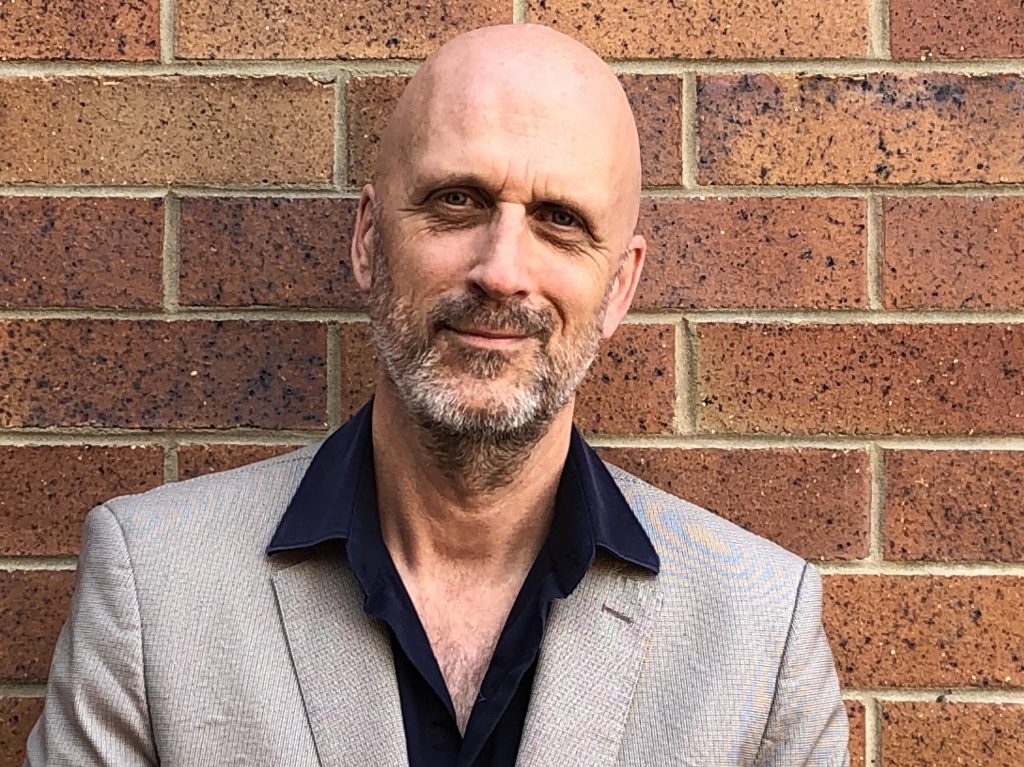
-¿Cómo expresar un amor por la cultura española e invitar a otros a sumergirse en ella, sin que tengan el acceso que ofrece el idioma?
A veces, la literatura y la música popular pueden ser de más difícil acceso para los extranjeros. Por esta razón, en mi libro y fuera, profundizo en el mundo del arte como un lenguaje más universal. Además de maestros obvios como Goya y Velázquez, quería que la gente conociera a algunos de mis pintores favoritos: Zurbarán, Sorolla y Zuloaga. Me cuentan mucho sobre España, y luego específicamente sobre el catolicismo, o Valencia, o Castilla. También quería expresar algunas opiniones «controvertidas»: nunca me ha gustado mucho el arte de Dalí, o de Picasso, o de Gaudí. Siempre he preferido Ribera a Velázquez. Estos son solo gustos personales. Otros favoritos son Juan de Juanes, Luis Morales, Alonso Cano, los románticos del siglo XIX y los pintores de la historia … Y quizás por encima de todos ellos, para mí, está El Greco. En verdad, el más grande.
Para mí, esta concentración en lo que es en gran medida, aunque no exclusivamente, arte religioso, es deliberada. Vivimos en una época en que la Iglesia Católica ha sufrido un enorme daño de reputación; en Australia esto es muy pronunciado. Destaco en el libro que defender el catolicismo es difícil de vender hoy en una sociedad secular y en muchos sentidos enojada. Sin embargo, existe (para alguien criado en los anglicanos como yo) una clara distinción entre la Iglesia católica como institución y el catolicismo en sí mismo, como un sistema de creencias que ha sido la fuerza motriz o la inspiración de gran parte del arte y la poesía más importantes de los últimos 500 o más años. Es este elemento del catolicismo lo que deseo celebrar; es un juicio estético, no moral.
–En España también tenemos nuestros clichés sobre Australia.
Cuando viví en España por primera vez, la ignorancia de Australia era casi total, y lo mismo era cierto en Australia con respecto a España. A finales de los años 80, el cliché de ‘Crocodile Dundee’ fue algo con lo que, como todos los australianos en el extranjero, tuve que vivir mucho tiempo. Con los años, esta situación ha cambiado drásticamente, pero Australia sigue siendo algo desconocido. Internet pone a la vista todo el mundo, pero todavía hay preguntas sobre la naturaleza de Australia: ¿Cómo de grande es realmente? ¿Hay tantos animales e insectos peligrosos? ¿Sigue siendo una colonia británica? ¿Cómo es de asiático? Creo que mucha gente está sorprendida por lo multicultural que es Australia y la gran diversidad de nuestra población.
Otro factor importante para superar la ignorancia ha ocurrido en la última década: por un lado, cada vez más jóvenes australianos hacen en España una parte esencial de sus viajes internacionales; mientras que después de la crisis financiera de 2008, miles de jóvenes españoles, sobre todo profesionales altamente calificados, encontraron oportunidades de trabajo en Australia. Esto fue una especie de «fuga de cerebros» para España, pero Australia se ha beneficiado enormemente. Los españoles a menudo se encuentran entre los principales científicos e investigadores en Australia en la actualidad.
-Australia y España afrontaron una cuestión similar: qué hacer con las poblaciones originarias.
Si, absolutamente. Pero con al menos dos diferencias: en primer lugar, en Australia este problema todavía está con nosotros, a pesar del enorme progreso que se ha logrado. De hecho, muchas personas argumentarían (y yo estaría de acuerdo) que el largo y lento proceso de reconciliación con la población indígena sigue siendo el mayor desafío de Australia como nación. En segundo lugar, en Australia, la presencia indígena no forma parte de un «imperio de ultramar», sino que forma parte del tejido cotidiano de nuestra nación. De hecho, el desarrollo de Australia, tal como lo conocemos, sólo fue posible gracias al desplazamiento de la cultura indígena.
Siempre he creído que una colonización española de Australia, sin ser ni mejor ni peor, habría tenido resultados diferentes para la población indígena. Hubiera habido más matrimonios mixtos y un esfuerzo significativamente mayor para registrar y preservar algunos de los aproximadamente 200 idiomas que existían aquí antes de la colonización, la gran mayoría de los cuales se han perdido.
–El arte, al que tantas páginas dedica en su libro, parece habernos aproximado, más allá de los estudios sobre Goya de Robert Hughes, hasta ahora “el” hispanista australiano…
Es interesante: creo que su libro sobre Goya fue uno de los mejores, mientras que su libro sobre Barcelona fue uno de los más débiles: fuera de sus áreas de especialización de arte y modernismo, en realidad no daba la sensación de haber «vivido» Barcelona. En todo caso, yo invitaría a los españoles a explorar el arte australiano, que es tan diverso como el propio país. Aunque a menudo ha seguido las tendencias europeas y norteamericanas, sin embargo, también ha traído un magnífico grupo de artistas al escenario mundial. También tiene una creciente importancia para muchos australianos, de todos los orígenes, el mundo diverso, original y profundo del arte indígena.
-Cerramos. Han sido 35 años desde que se encontró con España…
Lo digo en mi libro. Tantos años sumergiéndome en el universo español han resultado enriquecedores en más formas de las que puedo contar, pero sobre todo, hay algo más que me resulta difícil de definir, aunque que sé que es cierto. Me ha hecho una mejor persona. Esto tal vez sea cierto para todos los que aprendemos a vivir en dos culturas y dos idiomas: nos hacemos personas más sabias, más tolerantes y, espero, más compasivas. Por esto, siempre digo, y lo creo sinceramente, que estoy en deuda con los españoles.
Luke Stegemann: «In Spain I discovered a Europe I had never been told about»
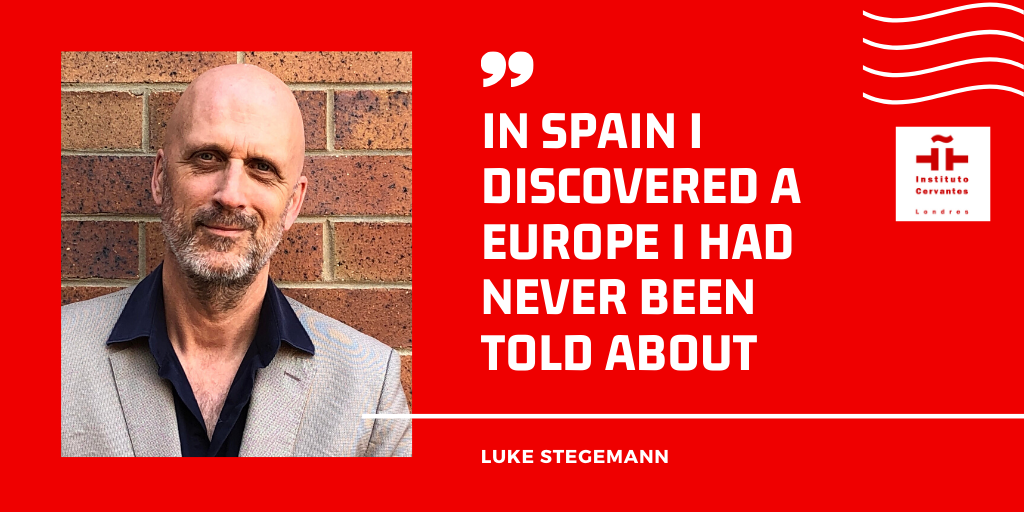
Luke Stegemann was born in Brisbane and raised in Queensland, southern New South Wales and the ACT. After first visiting Spain in 1984, he later spent long periods living in Madrid, Barcelona and Valencia.
Stegemann has worked in media, publishing and higher education, and as a Spanish-English translator, in both Australia and Spain. He was formerly the managing editor of ‘The Adelaide Review’, and the founding editor of ‘The Melbourne Review’.
Stegemann has written widely on Spanish art, history, culture and politics, and now lives and works in rural south-east Queensland. He continues to spend time each year in Spain. He has recently published The Beautiful Obscure, a remarkable work which analyses aspects of Spanish cultural influence from an Australian viewpoint.
In this conversation, Stegemann talks about synergies and divergences between both countries with past, present and future perspectives, all seen within the framework of his own love of both countries.
-In The Beautiful Obscure, the discovery and the experience of Spain from your Australian background comes together with your reflection on the historical similarities, encounters and distances between both countries. The question is obvious: what attracts an Australian to Spain, back in the 80s?
In some respects it was fortuitous. Travelling around what was then ‘western’ Europe in the year after completing my first university degree, I had not planned to spend more than a few days in the north of Spain. Yet once inside the country, I felt an immediate attraction – unlike anything I felt, for example, in Greece, or Italy, France or Germany – and a planned two-three days became one month as I travelled ever deeper into the country. And this was 1984 – a Spain that has in many respects completely disappeared now. What I felt strongest – and I discuss this in some detail in the book – was a sense of discovering a Europe I had never been told about. It was as if an entire section of the continent, whose history I thought I had studied, had been hidden.
So the attraction was to the unknown, but it was not as simple as the classic ‘orientalising’ experience of ‘the exotic’. It was clear straight away that this was part of my own cultural heritage, part of the story of the continent of my ancestors. I immediately thought, “How did I not know this?” and then, “How can I live here?” When I returned to Australia and explained my plan to return to live in Spain as soon as possible – something I had never considered until then – my family and friends had no idea what I was talking about. Spain had not yet joined the EU, and was debating its entry into NATO. Two years later, and having armed myself with a second degree – this time in education – I returned to work initially as an English teacher. So began, with life in Spain in 1987, what has become the most significant chapter and influence on my adult life.
One thing that is important for me is to emphasise that being Australian – as opposed to British or North American – I believe I bring a different perspective on Spanish history and culture. I come from ‘the south’, from the Pacific and from a European colony: all of these influence my manner of understanding Spain and its place in the world. No part of Australia was ever colonised by Spain (though it might have been), nor has Australia ever had any conflicts with Spain. In that sense, we have no ‘history’, no ‘baggage’ as companion countries. People often remark on the similarity (to some extent – it shouldn’t be exaggerated) of character between Australians and Spaniards, an open friendliness and, I must say, a reputation for having a defiant attitude to authority, which is mostly façade and not a reality! Certainly there is a determination in both countries to enjoy life, and fill it with as much pleasure as possible, albeit Australians are more socially conservative.
-For centuries, Spain’s relationship with Australia seems to have been a story of frustration: despite maintaining a presence in the Pacific, neither the ships of the imperial adventure nor those of the scientific expeditions would find permanent accommodation on its coasts. Even in diplomatic and commercial terms, not a few opportunities were lost … «Your schooling had somehow neglected Spain,», said British Ted Hughes in a poem to his wife, the also poet, but American, Sylvia Plath. Has that also been the case in Australia? Are cliches the best allies of ignorance?
In Australia, Spain has always been neglected as a subject of political and historical study. Firstly, this was due for many years to Australia’s imitation of British education with all its cultural and geopolitical prejudices; latterly because, having removed ourselves from the British imperial orbit, over the past four decades Australia has consciously positioned itself as a regional Asian power. For an ‘Anglo’ country, there is a very high level of ‘Asia literacy’ in Australia. Having said that, we stepped out from under the British umbrella to become a faithful, and somewhat subservient, ally of the Americans, whose culture has come to swamp so much of our own.
Spain is a popular tourist destination, though I despair of the number of Australians who believe that visiting Barcelona and San Sebastian constitutes ‘visiting Spain’. Time pressures weigh on tourists, of course, but so few take the opportunity to explore those regions that for me are a highlight of Spain: Madrid; the villages of Zamora, Soria and Segovia; the Maestrazgo; the hills of Jaen, the Tierra de Campos, and not forgetting the backroads of Toledo and Ciudad Real, through deepest Quixote territory…
Madrid is an interesting case in point. I’ve always been fascinated by those foreigners who dislike Madrid, and express a strong preference for Barcelona, or even Valencia or San Sebastian. For me, Madrid is such a concentration of so many historical, cultural and political lines of influence, it is indispensable as a reference point. This is why I have looked to compare moments from the history of Madrid with Australia: two examples are those navigators, returned from the Pacific, spending years begging at the court of Phillip III for funds to return to discover what they sense is still there, and never quite making it… or Carlos III and the building of the Puerta de Alcalá: it arose in the very same years as the British were planning their penal colony at the bottom of the world, and of course the death of Carlos III in 1788, the same year the British founded Port Jackson, now Sydney.
For me these are not simply coincidences; they are parallel lines that flow through history, not necessarily touching at any point, but somehow bearing an influence on each other. This is why I felt the interweaving histories of Australia and Spain was a great, untold story.
But it is also interesting to consider the Ted Hughes poem you quote. For me it is a classic example of that mid-century north-Atlantic interpretation of Spain. A black and white Spain of Franco-era clichés and orientalist essentialising, that has aged badly. This, if you’ll permit me, is the view of Spain many Australians do not have, for we do not have those centuries of cultural comparison (and at times, of condescension). You’ll have noticed that in a 435 page book about Spain, I have made no mention of football, or bullfighting, very little mention of ‘blood and death’, and only very few mentions of flamenco. This is not because I do not appreciate and enjoy the cultural uniqueness of how these things are performed in Spain (in particular, the cante jondo tradition of flamenco) but I wanted to write a book that avoided all the usual staging posts for commentary on Spain.
(Incidentally, the question of the leyenda negra: while trying to avoid the above clichés, it is undeniable, at least in my cultural and political readings, of a certain dismissive tone towards Spain that I think runs through a lot of Anglo thinking. But to say so is to invite controversy. One can believe that Spain has been poorly treated by those who came after her, and who wrote their own versions of history as the ‘cultural victors’ whose influence extends so much into our contemporary world; you can see this, and understand it, without falling into Franco-like conspiracy theories, that a worldwide masonic and communist plot was out to destroy Spain. But I’ve seen, with the recent debates around Roca Barea, that to flag up the leyenda negra as something real, can get you tagged as reactionary, as Francoist…!)
One other obvious question in writing this book: how to express a love for Spanish culture, and invite others to immerse themselves in it, without them having the access afforded by the language? (Because no matter how much we can translate, ‘love’ and ‘amor’ are not the same thing; ‘evening’ and ‘atardecer’ are not the same… they all carry the weight of their own cultural heritage, and to say one thing, is not the same as to say the other! I have recently been doing some short translations of the poetry of Miguel Hernández into English, and it is enormously difficult to convey the sense of his words… the meaning, maybe, but the sense, the feeling… almost impossible!!) This is why I have made little mention of two of the greatest aspects of Spanish culture – its literature and its popular music – as they are difficult to access properly for foreigners. For this reason, I go in depth into the world of art, as a more universal language. Apart from the obvious masters Goya and Velázquez, I wanted people to know some of my favourite painters: Zurburán, Sorolla and Zuloaga. They tell me so much about Spain, and then specifically about Catholicism, or Valencia, or Castile. I also wanted to float a few ‘controversial’ opinions: I have never really liked the art of Dalí, or much of Picasso, or Gaudí. I have always preferred Ribera to Velázquez. These are just personal tastes. Other Spanish favourites are Juan de Juanes, Pedro Orrente, Luis Morales, Alonso Cano, the nineteenth century romantics and history painters… And perhaps above them all, for me, is El Greco. Truly, the greatest.
(And how often would I visit the Prado and find a room full of people crowding around Hieronymus Bosch – which is normal – but completely ignoring that singular masterpiece, on the opposite wall, which is Patinir’s vision of Charon crossing the Styx!)
For me this concentration on what is largely, though not exclusively, religious art, is deliberate. We live in a time where the Catholic Church has suffered enormous reputational damage; in Australia this is very pronounced. I make the point in the book that to defend Catholicism is a hard sell nowadays in a secular and in many ways angry society. However there is (for someone raised Anglican like myself) a clear distinction between the Catholic Church as an institution, and Catholicism itself as a belief system which has been the driving force, or inspiration, for much of the greatest art and poetry of the last 500 or more years. It is this element of Catholicism I wish to celebrate; it is an aesthetic judgment, not a moral one.

– It is true that the first city in the world to dedicate a street to AC / DC was Spanish … but the lack of knowledge between the two countries seems to have been a shared passion: in Spain we also have our cliches about Australia.
When I first lived in Spain the ignorance of Australia was almost total – and the same was true in Australia as regards Spain. I confess in the book how, as a young boy, I thought Seville was an Italian city… In the late 80s, when I was living in Madrid, the cliché of ‘Crocodile Dundee’ took over – something which all Australians abroad had to live with for far too long! Over the years, this situation has changed dramatically, but Australia remains something of an unknown. The internet brings the whole world into view, but there are still questions about the nature of Australia: just how big is it really? Are there so many dangerous animals and insects? Is it still a British colony? How Asian is it? I think a lot of people are surprised by just how multicultural Australia is; the huge diversity of our population.
Another significant factor in overcoming this ignorance has occurred over the past decade: on the one hand, more and more young Australians make Spain an essential part of their international travels; while after the 2008 financial crisis, thousands of young Spaniards – above all highly skilled professionals – found work opportunities in Australia. This was something of a ‘brain drain’ for Spain, but Australia has benefitted enormously. Spaniards can often be found among the leading scientists and researchers in Australia today. Additionally, there are community networks of young Spanish people that simply did not exist 25 years ago.
-Australia and Spain, even at different times, faced a similar question: what to do with the native populations, already in Australia, already in Spanish America …
Yes, absolutely. But with at least two differences: firstly, in Australia this problem is still with us, despite the huge progress that has been made. In fact, many people would argue (and I would tend to agree) that the long, slow process of reconciliation with the Indigenous population remains Australia’s greatest challenge as a nation. Secondly, in Australia the Indigenous presence is not part of an ‘overseas empire’ but forms part of the daily fabric of our nation. In fact, the development of Australia, as we know it, was only made possible by the displacement of the Indigenous culture, with not just the major loss of life but also the profound cultural loss of languages and knowledge of the land and its uses.
While historical ‘what might have beens’ are of little practical use, I have always believed a Spanish colonisation of Australia, without being either better or worse, would have had different outcomes for the Indigenous population. There would have been significantly greater intermarriage, and a significantly greater effort made to record and preserve some of the approximately 200 languages that existed here prior to colonisation, the great majority of which have been lost. And of course, Spain would have colonised Australia around two centuries before the British, so European Australia would now be a country of some 400+ years, like the US, rather than around 230 years.
-The link or bilateral knowledge is surely more intense after the Civil War, in which there were Australians of both sexes. But also the art, to which you dedicate so many pages in his book, seems to have brought us closer, beyond Ted Hughes’ studies on Goya, until now “the” Australian Hispanicist…
Firstly a small correction – I think you mean Robert Hughes in this case! It is interesting – I think his book on Goya was one of his finest, while I thought his book on Barcelona was one of his weakest (partly because it was really a book about Catalan modernism, which is fine, but Barcelona is much more than that; I thought it was obvious that outside of his specialist areas of art and modernism, he didn’t really give a sense of having ‘lived’ Barcelona. In fact, it felt very much as though research assistants had done most of the work. I couldn’t smell Barcelona, or hear her breathing in this book…)
Perhaps what I’ve said in the above paragraphs about art is sufficient. I would invite Spaniards, however, to explore Australian art, which is as diverse as the country itself. While Australian art has often followed European and North American trends, it has nevertheless brought a magnificent stable of artists onto the world stage. And also, of increasing importance to many Australians, of all backgrounds, is the diverse, original and profound world of Indigenous art. It represents, as much as anything, the triumph of the survival of our Indigenous peoples, and allows the non-Indigenous person a glimpse into their representations of ceremony, law, and the origins and nature of the world.
A final comment: I’ve said this in the book, and say it also whenever I talk about the book. Having spent 35+ years immersing myself into the Spanish universe has been enriching in more ways than I can recount, but above all, there is something else that I find hard to define, but which I know is true. It has made me a better person. This is perhaps true of all of us who learn to live across two cultures and two languages: we find ourselves wiser, more tolerant and, I hope, more compassionate persons. For this, I always say, and sincerely believe, that I am in debt to the Spanish people.


